Travels with Dick and Karen

|
Washington DC 2013
Week 2
|
Mary and Jeremy create fantastic ceramics inspired by pressing real leaves and stems into the clay.
They were on the way between their home in southeast Ohio and a show in Pennsylvania. So we found secured covered parking with adequate roof clearance a few blocks from our apartment and they pulled in at 9pm.
Once they were with us the trip took a decidedly "green" turn. |
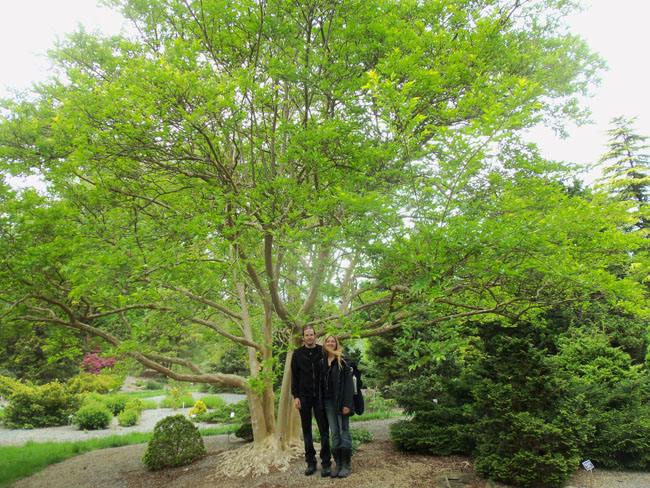 |
First we dove into the subway and bus system to head out to the Keniworth Park and Aquatic Gardens on the south bank of the Anacostia River. Many water lilies |
 |
A few strutting families of geese and goslings. |
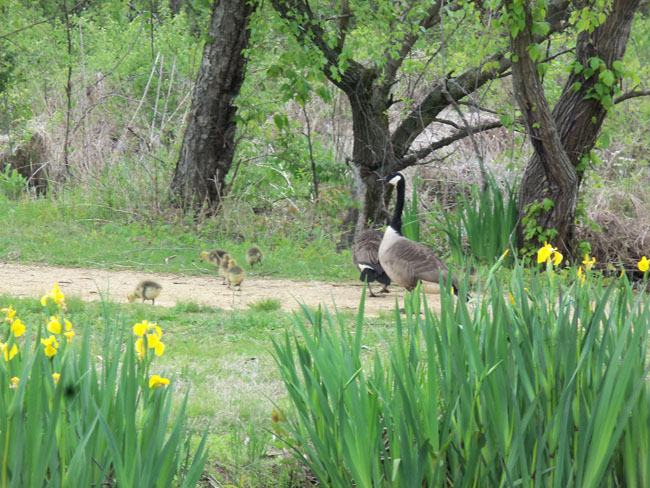 |
| Egrets not willing to get too close. |
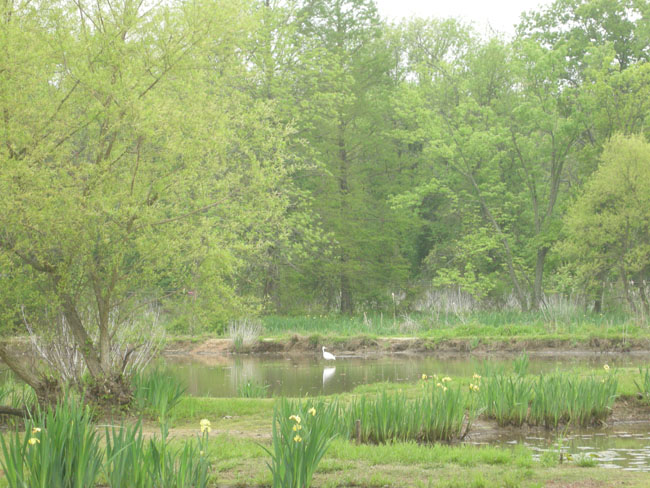 |
| After a couple of hours there, we spent two hours or so "simply" crossing the Anacostia river (by going back in-city, then back out) to reach the National Arboretum on its northern bank. We hiked many miles along its roads and paths... |
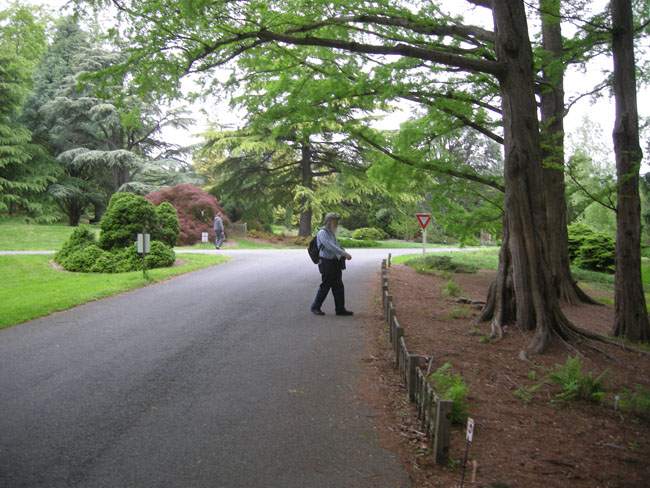 |
| and occasionally just struck out cross-country. Our late arrival meant we only visited a fraction of its 446 acres, and were too late in the day to visit the Bonsai collection. |
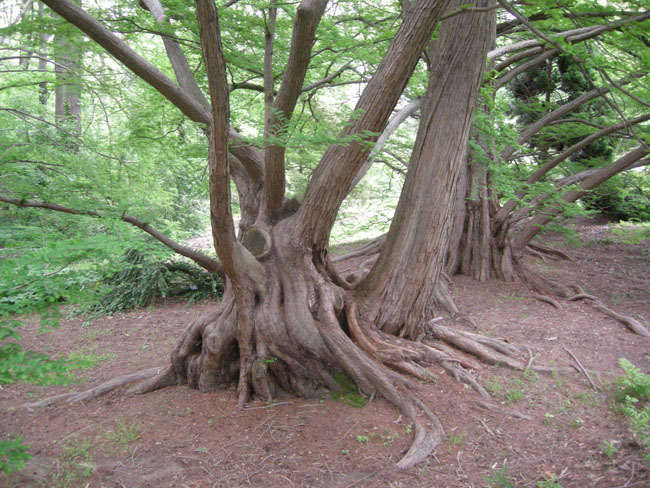 |
The next day we headed for our major targets: the Smithsonian Museum of Natural History...
Karen was greeted by a tree fern, sparking memories of New Zealand. |
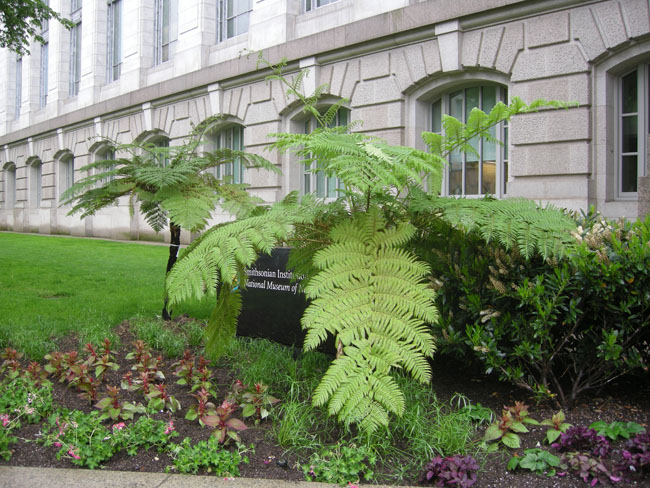 |
| We walked in and were instantly captured by every exhibit we saw. From armored fossils ... |
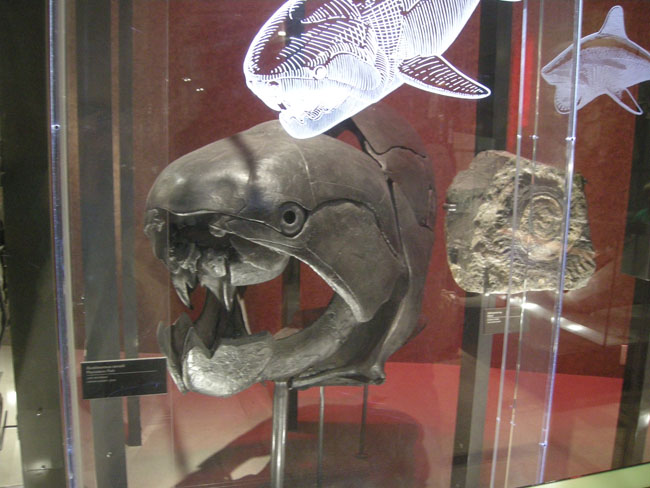 |
| ... to toothy Megamouth |
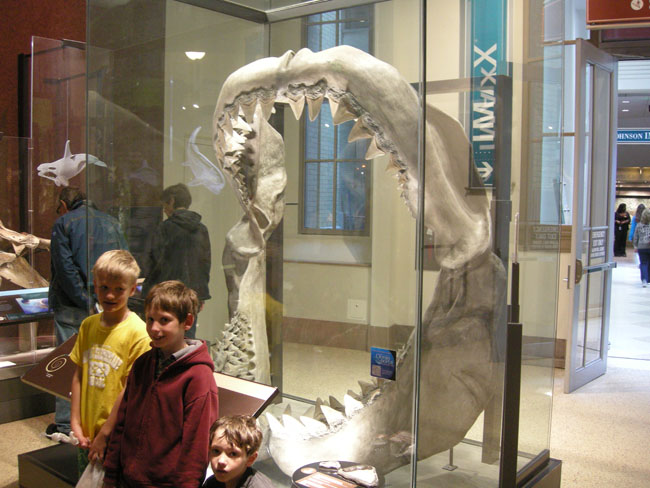 |
| From highly articulated and wiggly ... |
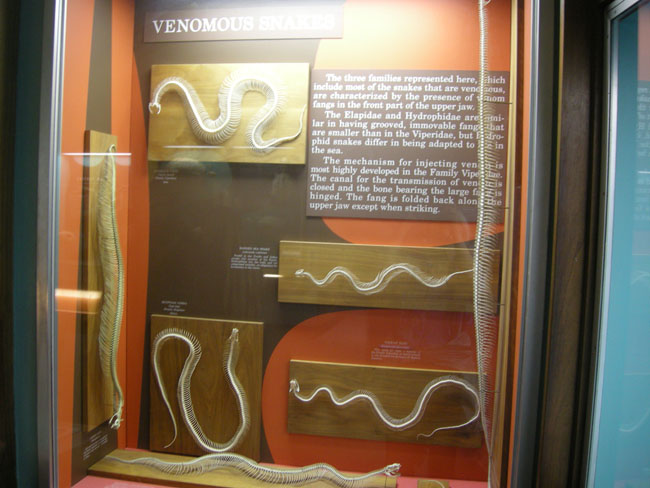 |
| ...to the upright slothful |
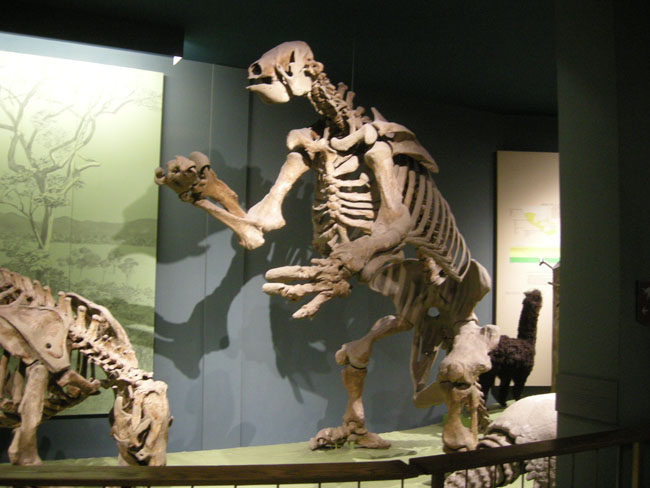 |
| To a lot of time spent in the geology and crystals... |
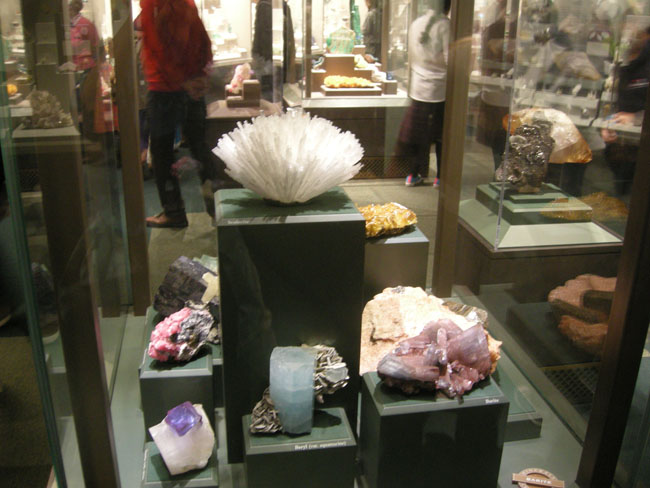 |
...and their shaping into gems.
As expected, we spent the entire day in the Natural History Museum, including an unbelievably hectic lunch surrounded by hyperactive children. We staggered home. |
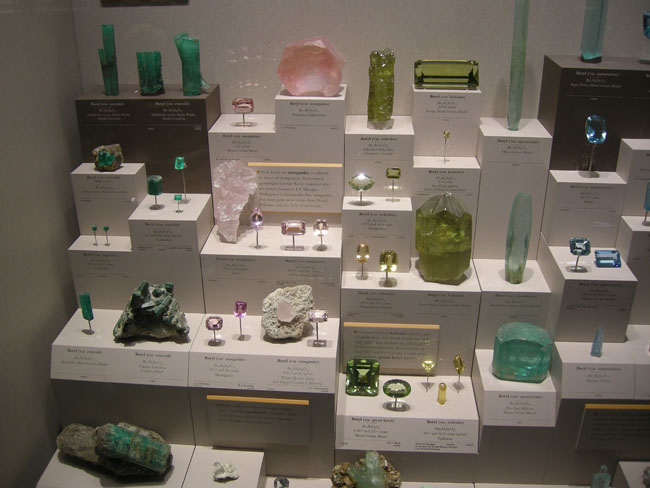 |
The next day we escaped to the much much calmer spaces of the National Botanic Garden and Conservatory. |
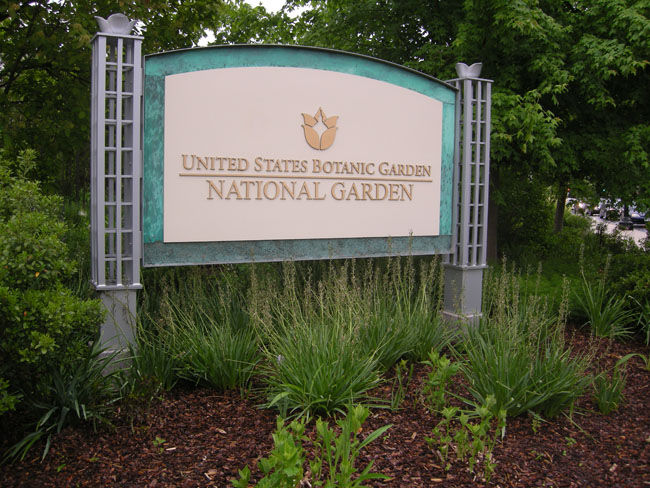 |
The Conservatory is accompanied by exterior gardens.
To the west is the National Garden.
To the south is Bartholdi Park with this "Fountain of Light and Water". |
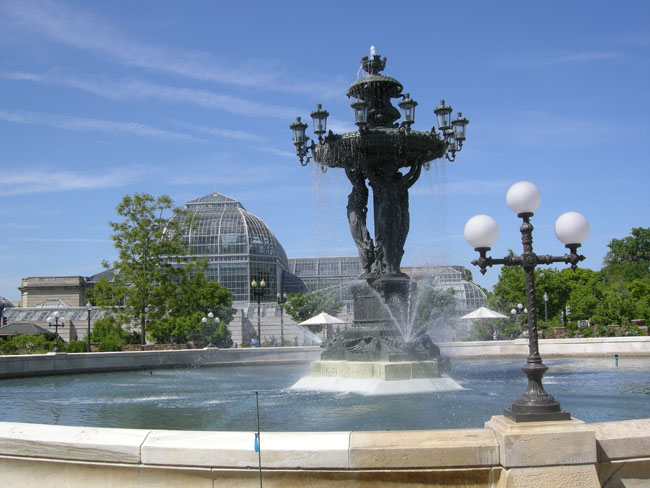 |
But it was the Conservatory that drew us in... flurries of orchids |
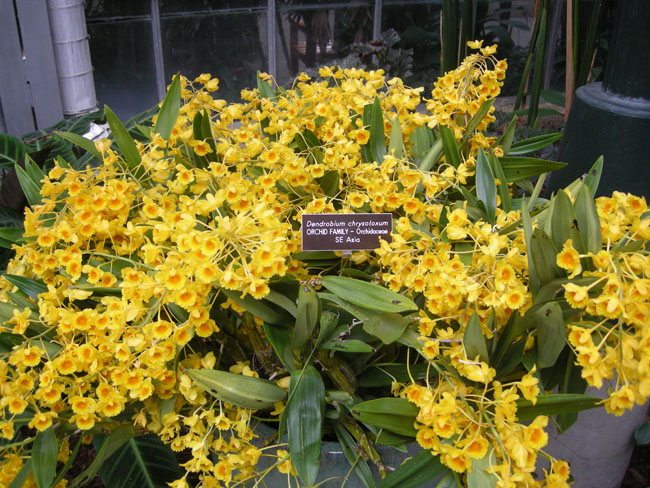 |
| Exotic tropical plants such as this Star Fruit |
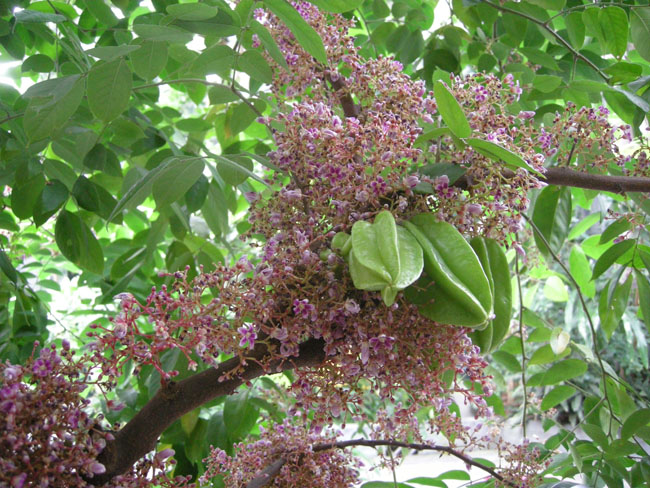 |
| Bananas forming fruit |
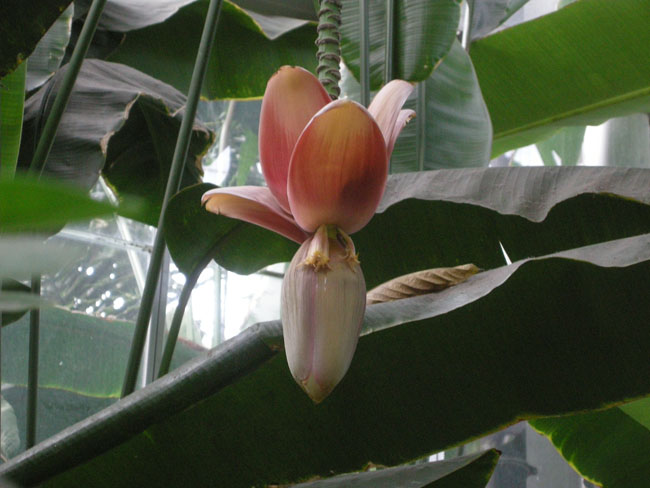 |
| A mezzanine walkway took us high and provided lush overviews |
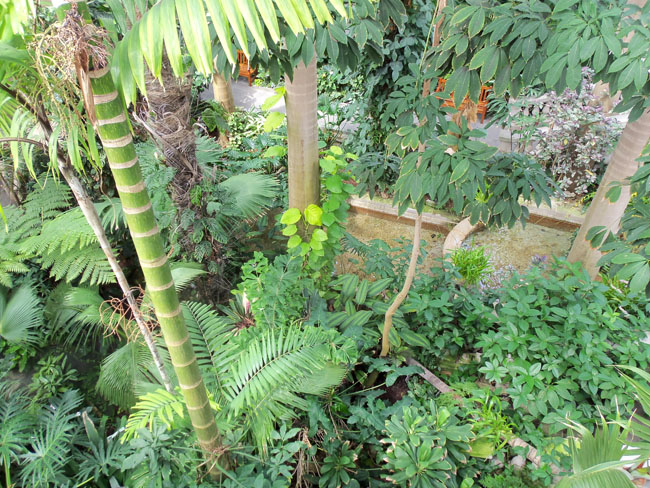 |
| Plants were met and botanized |
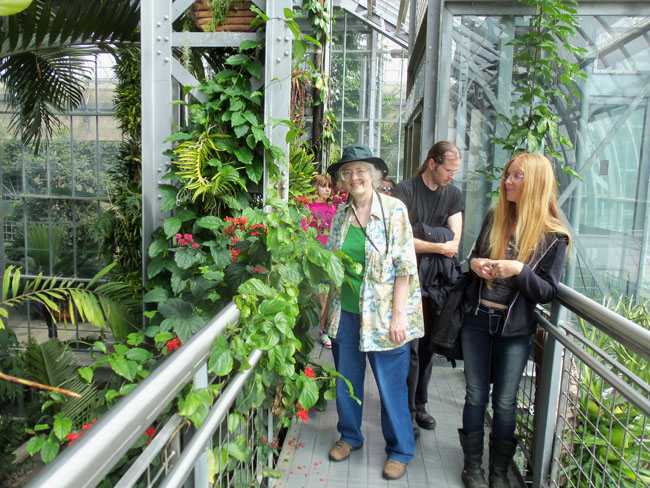 |
| ...by 3/4ths of the party. It was nearing lunchtime. |
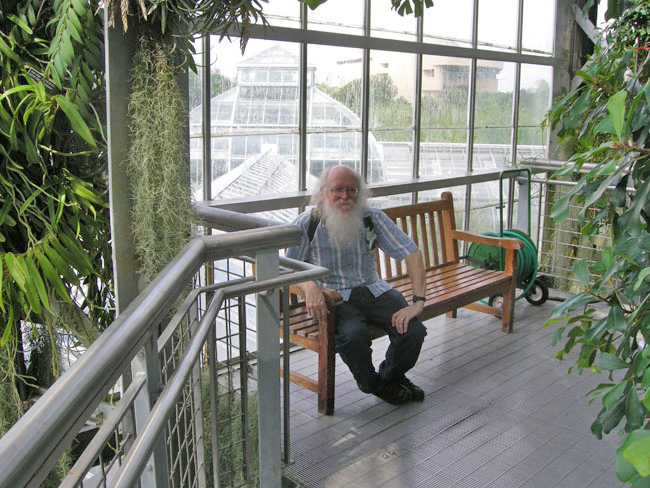 |
| So we headed over to the adjacent National Museum of the American Indian, which was reputed to have a thematic cafeteria, the Mitsitam. It was exceptional. The various sections of the serving areas were divided by region: American Plains, Southwest, Pacific Northwest, South American and others. Each presented foods representative of the ingredients and styles of their area. Quinoa, yucca, yellow corn, buffalo and salmon were a tiny hint of the flavors. Jeremy and Mary are vegetarians and were surrounded by flavor combinations they'd never experienced. Upon discovering that there was a cookbook available, it was immediately procured. |
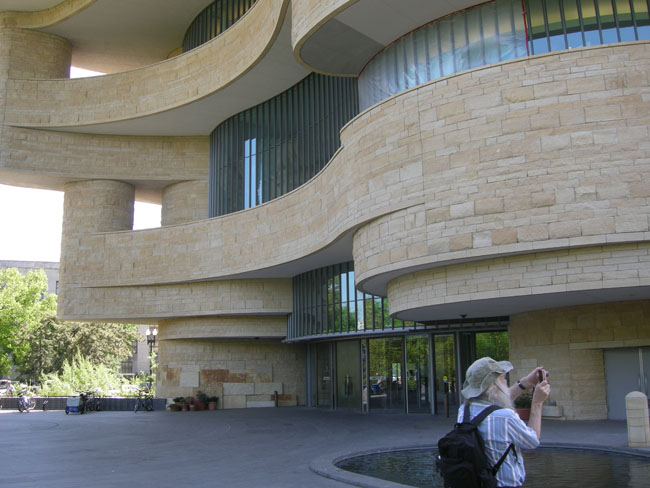 |
| The museum had a performance floor in the main lobby. On the day we were there they were featuring the culture, traditions and indigenous products of Native Bolivians. |
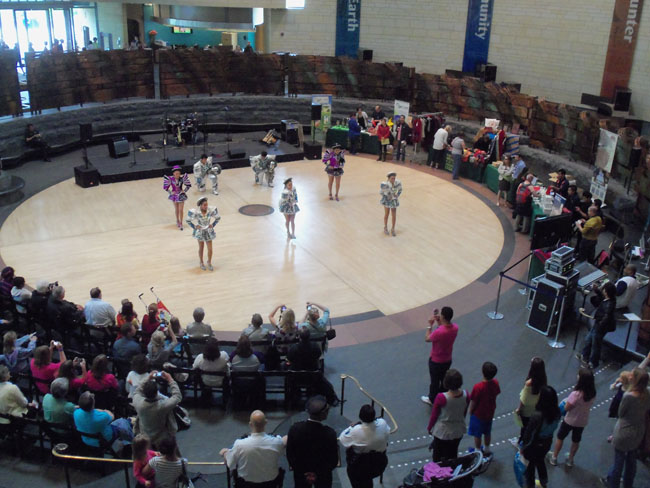 |
| High on one wall was a slotted window with curved prisms of glass suspended before it. As the sun moved across the sky rainbows of color played along the artifacts and the performance floor. |
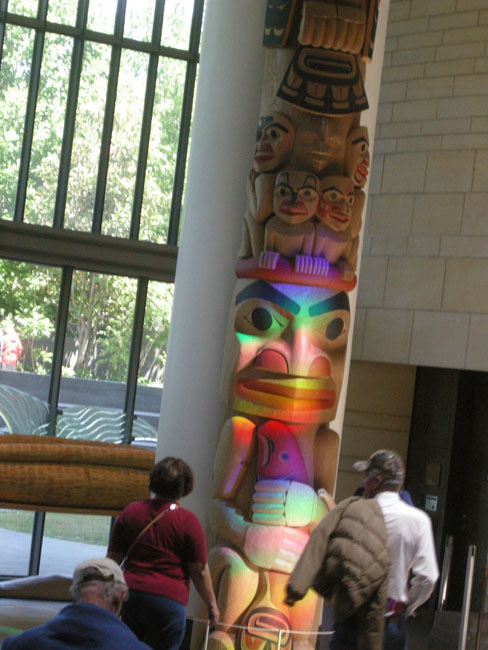 |
| The museum had displays ranging from pre-Columbian pottery to current regalia used in ceremonies and everyday life. |
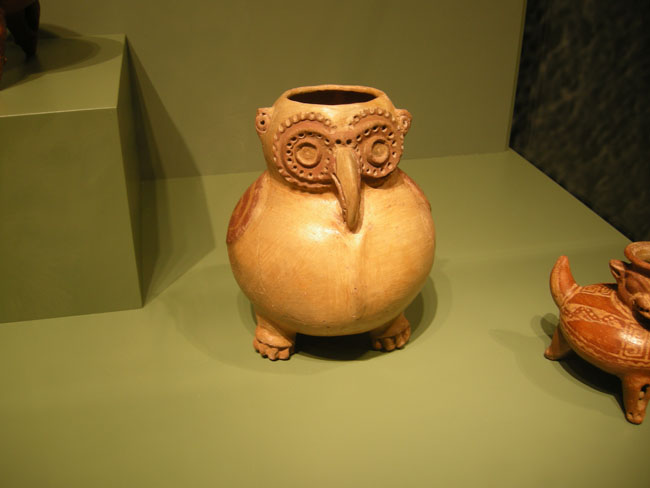 |
| Designs both very old ... |
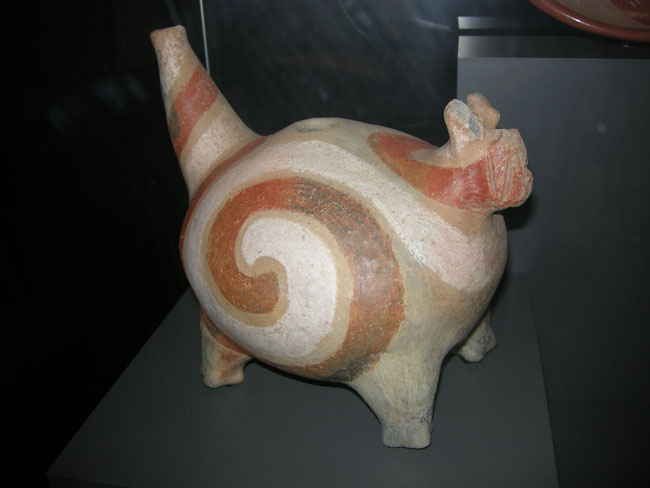 |
| ... and very complicated. |
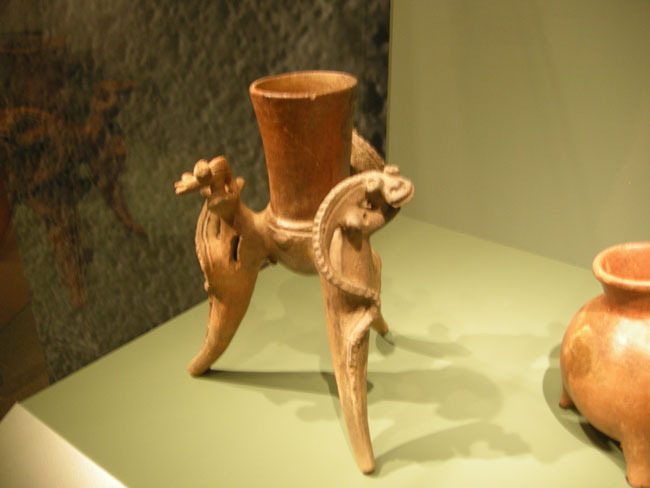 |
| The next morning Mary and Jeremy collected their van and headed off to Philadelphia... Karen and Dick grabbed a bus and headed out to the Washington National Cathedral in Georgetown. |
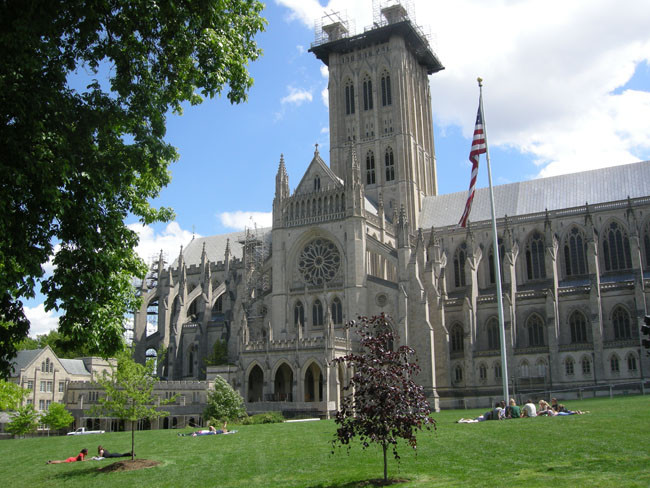 |
| Except for one in St Paul, Minnesota, Karen had not experienced the full majesty of a classic cathedral. The main nave is 500 feet long. |
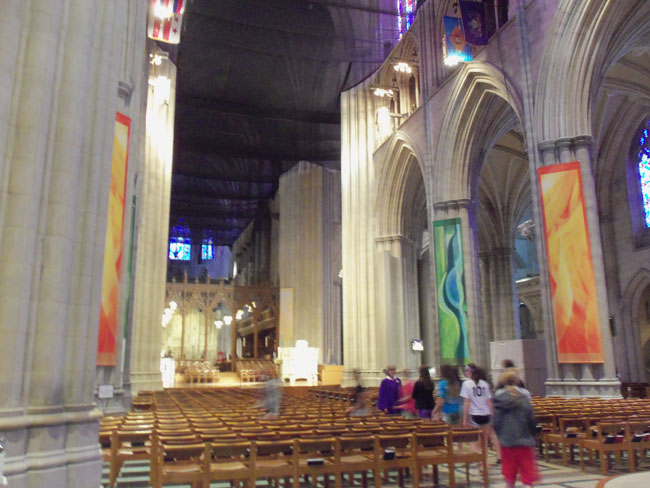 |
| She was entranced. Complex ironwork... |
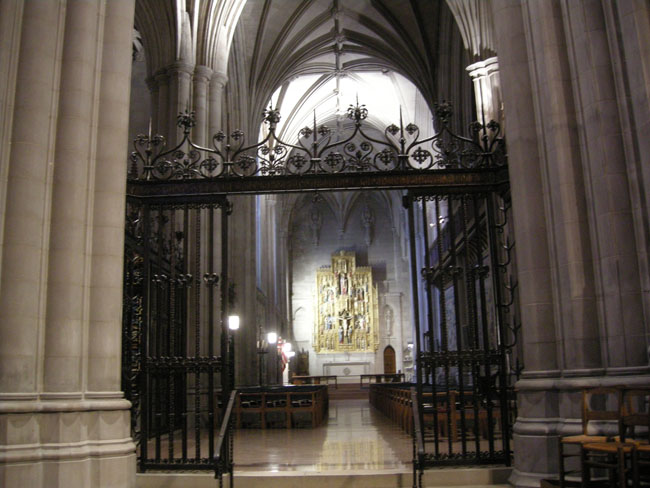 |
| ..and woodwork separating the numerous naves. |
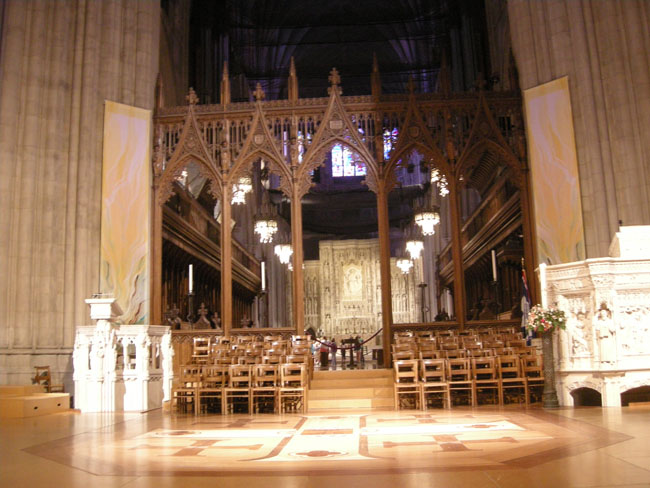 |
| The intricate carvings of the central altar includes 110 figures depicting the ideals of Christianity |
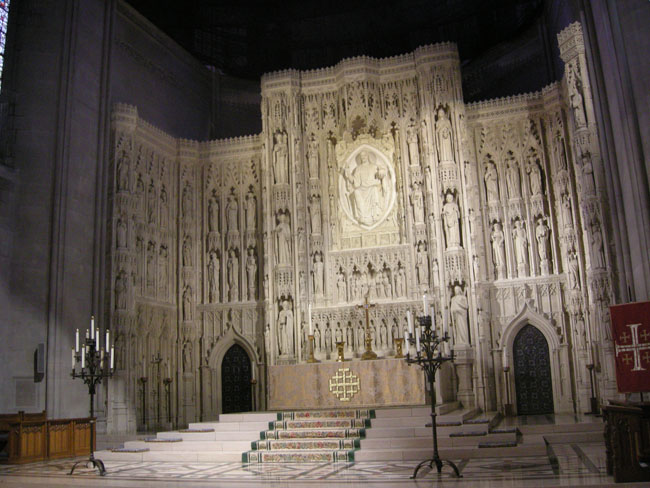 |
| the high columns and vaulted ceilings |
 |
..and stained glass both as intricate mosaics |
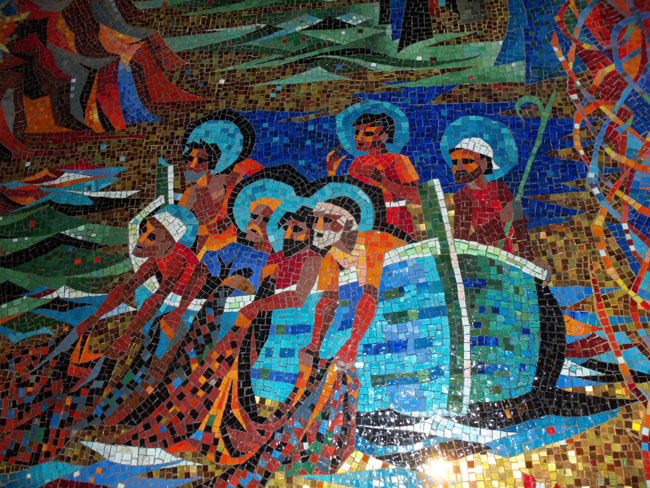 |
| and the full glory of rose windows |
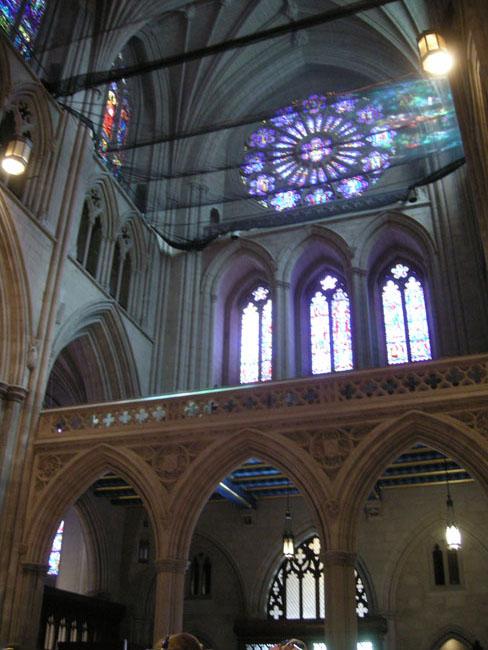 |
| and rows and rows of themed stained glass windows in the bays |
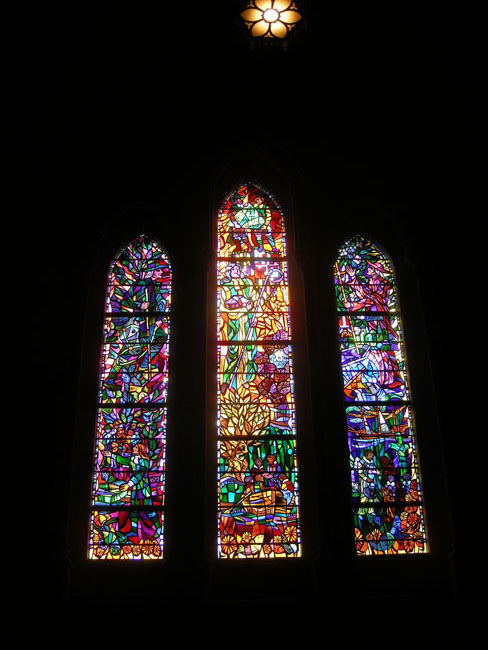 |
| Then we took the elevator up the west tower... from which there were views of the area, plus close-up looks at the damage sustained during the August 2011 earthquake (the same one that closed the Washington Monument). |
 |
| The tower also allowed us to see the buildings, grounds and gardens of the surrounding "Close". |
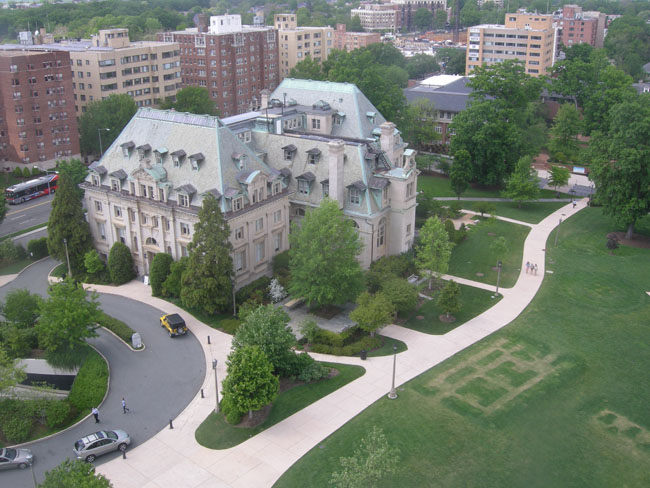 |
| The tower had an exhibit of detailed photographs (and pieces) of the immediate damage, including gargolyes and stones that had fallen to the roofs or grounds, plus angels that had rotated and shifted on their bases. |
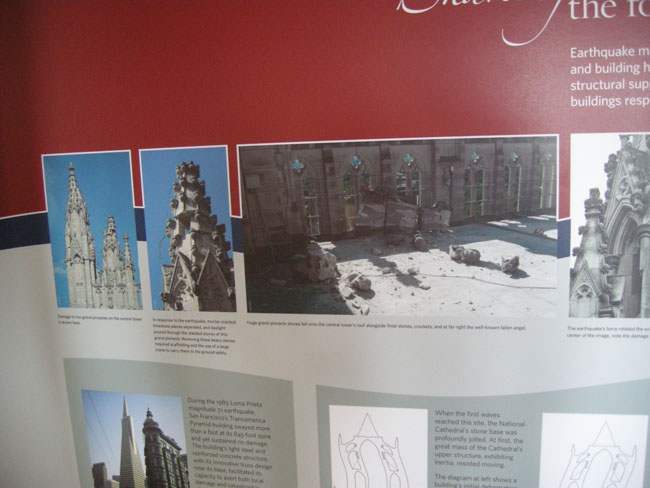 |
| We came down to earth and walked back to Connecticut Avenue and thence to the National Zoo... we arrived late in the day, and the crowds were down. |
 |
| Many animals were napping in the late afternoon. |
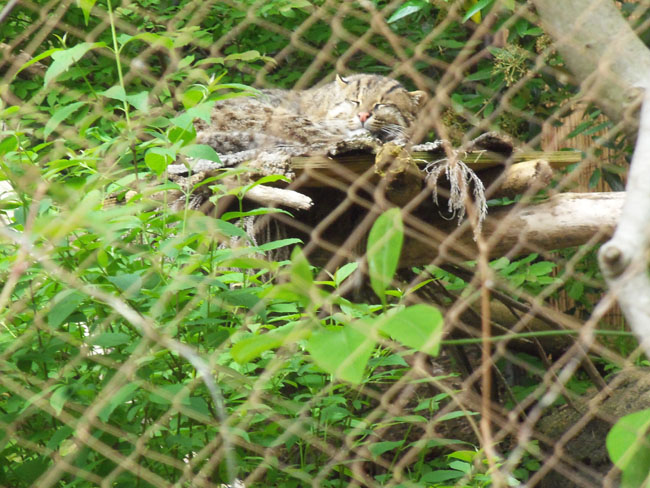 |
| Karen had "see a panda!" on her list, and one spared no effort to fulfill her wish. |
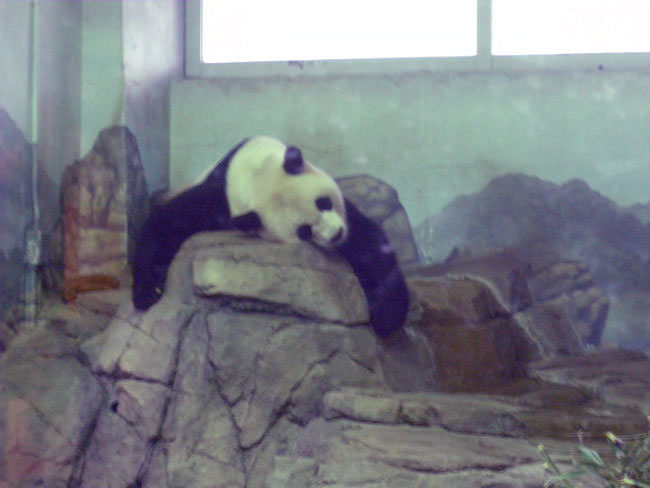 |
| A few animals were willing to be busy as beavers to entertain us. |
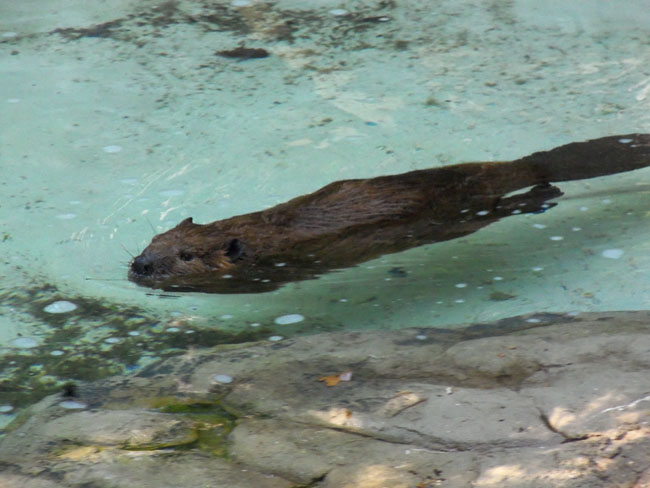 |
| And then we found magic... it started by entering the "Amazonia" exhibit building. As we walked along on the ground floor, we passed pools with skates and turtles... |
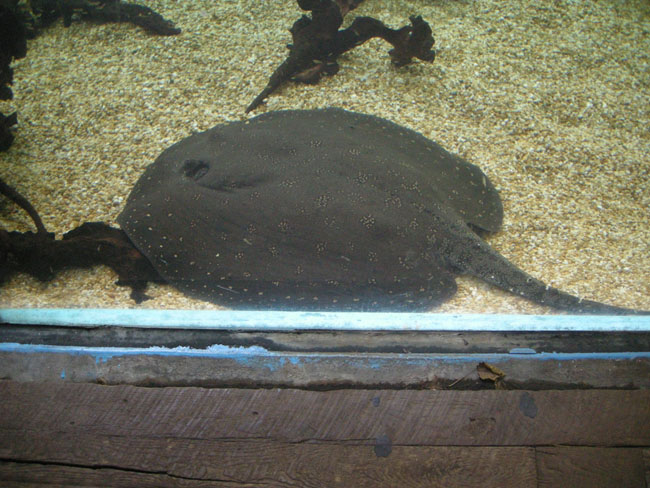 |
| ...and tanks with Amazonian river fish... this is an Arapaima, a living fossil and one of the world's largest freshwater fishes. The tank also had red-tailed catfish, black pacus, and (i didn't recognize any) piranha. |
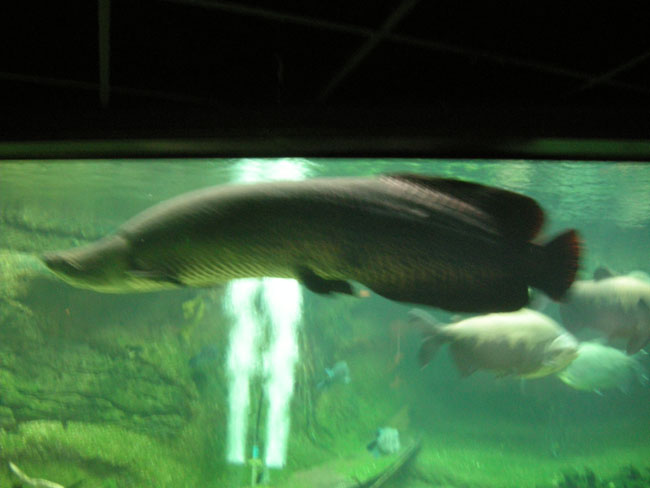 |
| Smaller glass aquarium tanks had other fascinating fish. |
 |
| Then we went upstairs... and that's where the magic happened. We had just walked into the Amazon jungle! Below a very high glass ceiling we were walking amongst towering living kapok, avocado, and cocoa trees. Monkeys were scurring freely around us. (Signs advised us to stay at least 5 feet away from them). |
 |
| We found blooming Heliconia rostrata (Lobster claw, False-bird-of-paradise) |
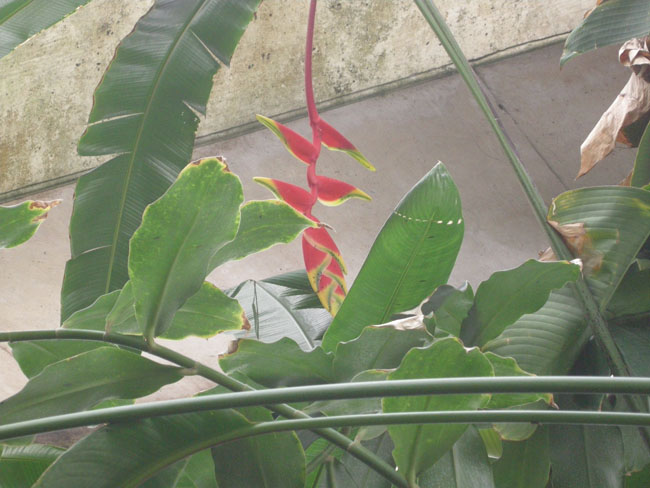 |
| The cocoa tree was in bloom! |
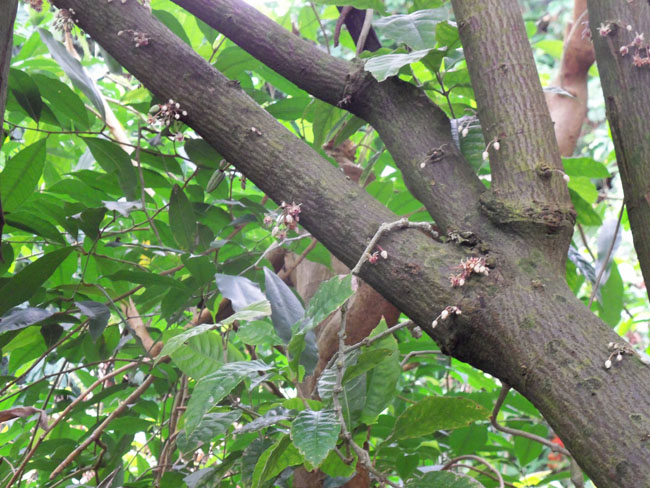 |
| Birds, including this roseate spoonbill, were flying free. |
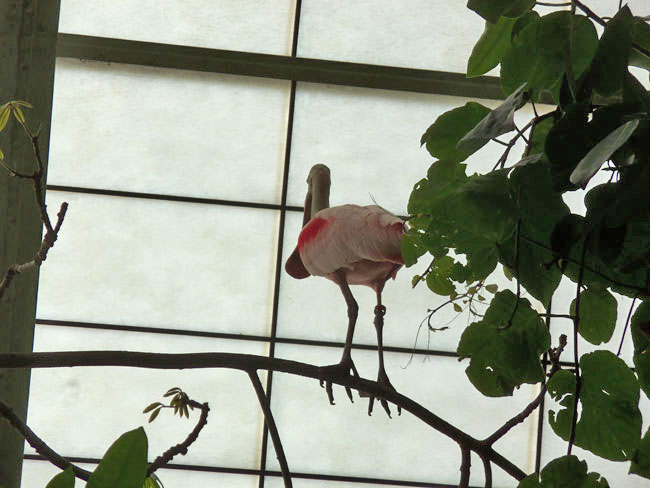 |
| We may have been in Washington DC, but this wasn't the jungle we'd been expecting. We finally left only when they closed the building. (We came back on another day) |
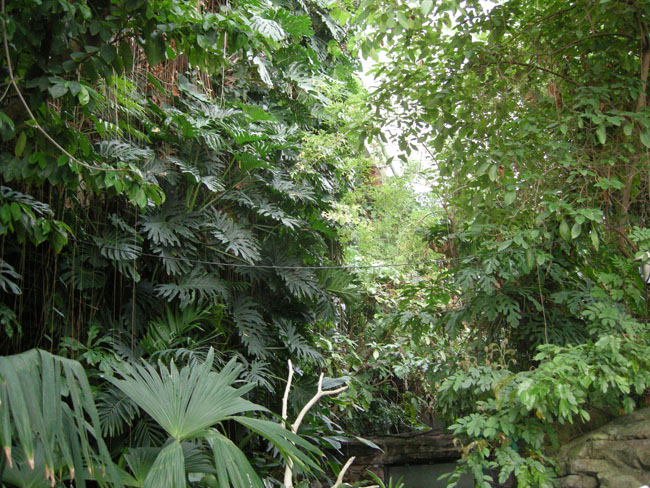 |
| The next day (after the morning stop at the Post Office for a coffee shake) we were standing at the door of the Air & Space Museum when they opened. This was a slight (guidebook recommended) attempt to avoid the crowds. A Wright Flyer hanging next to the Pioneer 10 spacecraft. |
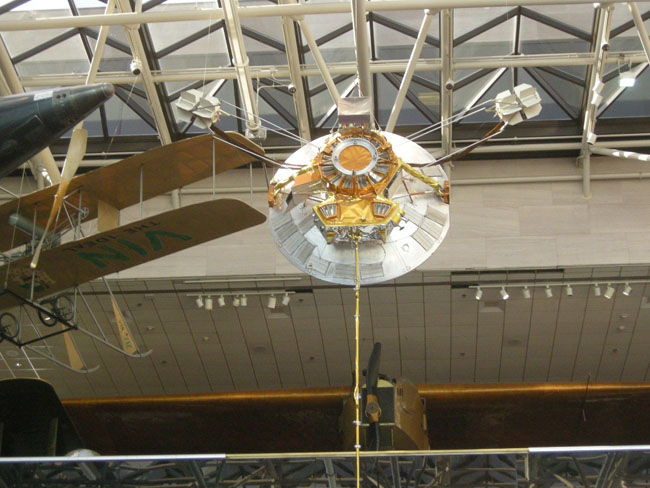 |
| Nearby we have Space Ship One, the first commercial manned spacecraft (if you consider 100 kilometers (60 miles) altitude "space") |
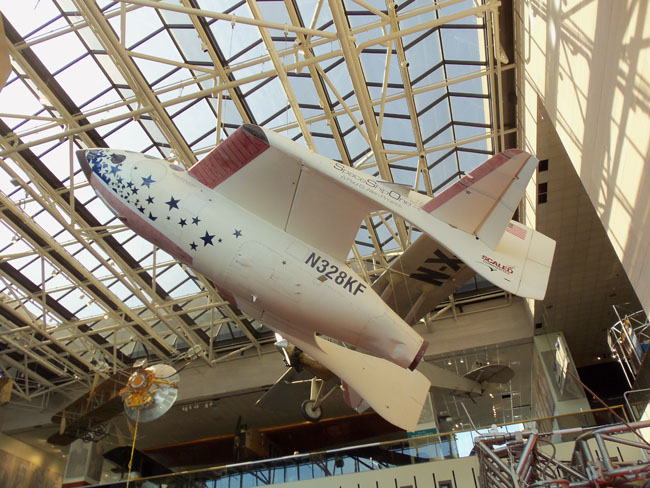 |
| A 1/3rd scale model of a Soviet Vostok 3KA satellite, the type used by Yuri Gagarin and other mid-1960s cosmonauts. |
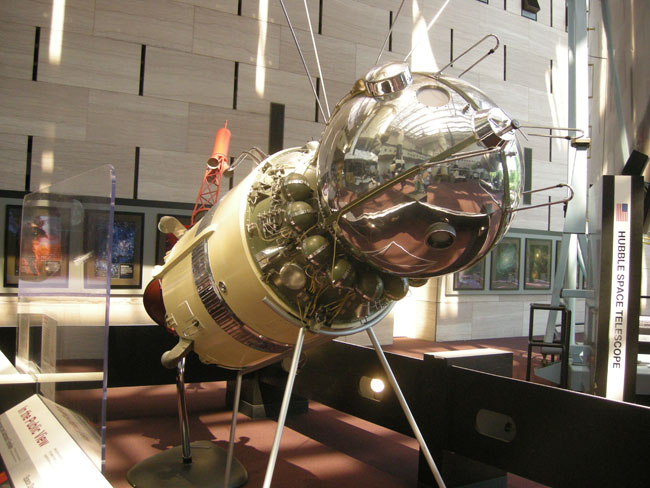 |
| The Apollo Lunar Excursion Module |
 |
| Stained Glass! Depicting the electromagnetic spectrum |
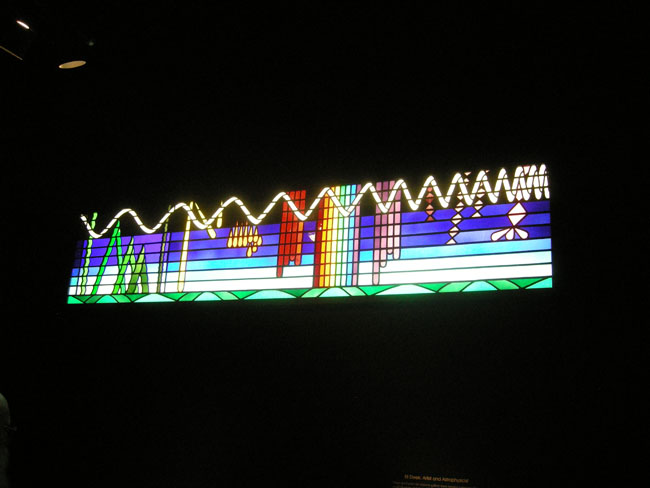 |
The Commercial Aviatiomn "wing" of the building.
Us folks in Seattle are kind'a spoiled by the local Boeing Museum of Flight. |
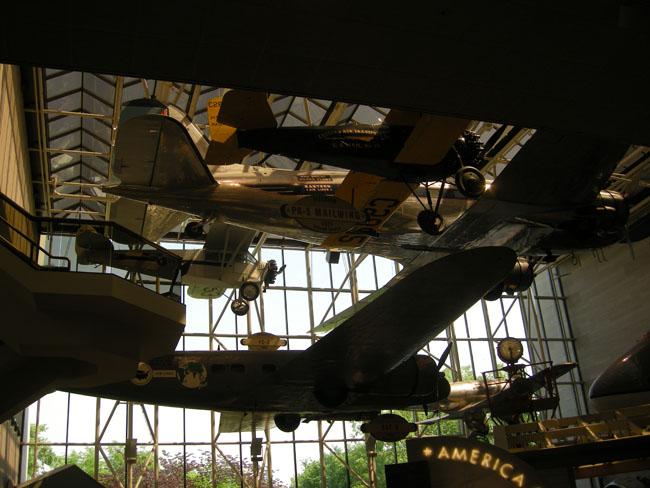 |
| Gradually gaining membership is the Unmanned Aerial Vehicle (UAV) or "drone" section. |
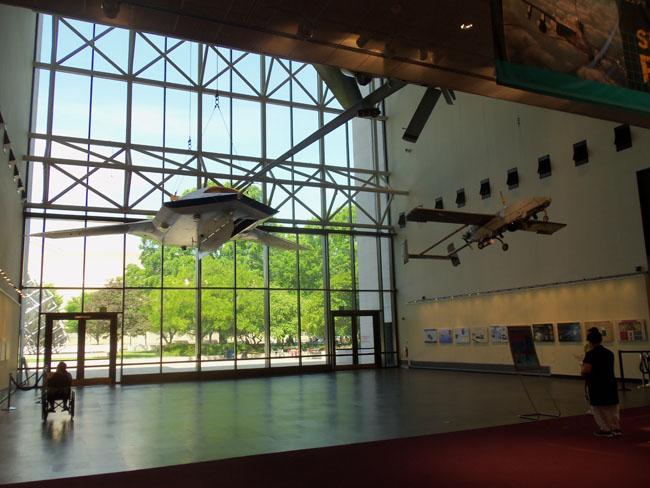 |
| The Saturn's F-1 rocket engines. How we went to the moon. |
 |
| We discovered that on some evenings the Museums stayed open later than the usual 5:30pm... we came back to the Air & Space Museum after 6pm to find it almost deserted. |
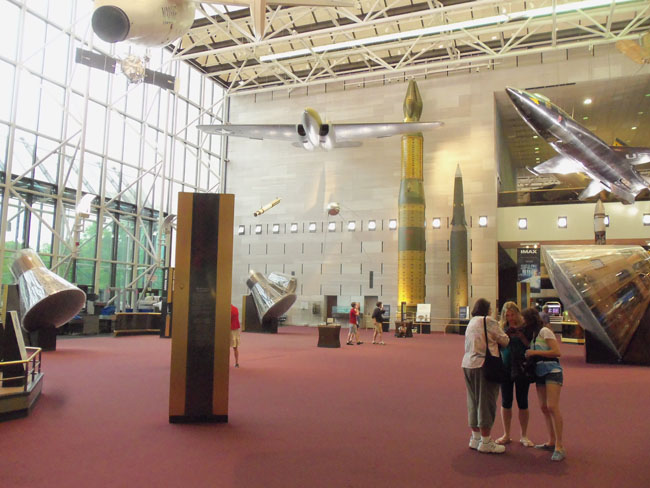 |
| ... and thus managed to find the basement of the gift shop, in which was this 11-foot wide "hero" model of the
Starship Enterprise
that had been used in the production of the original television series.
|
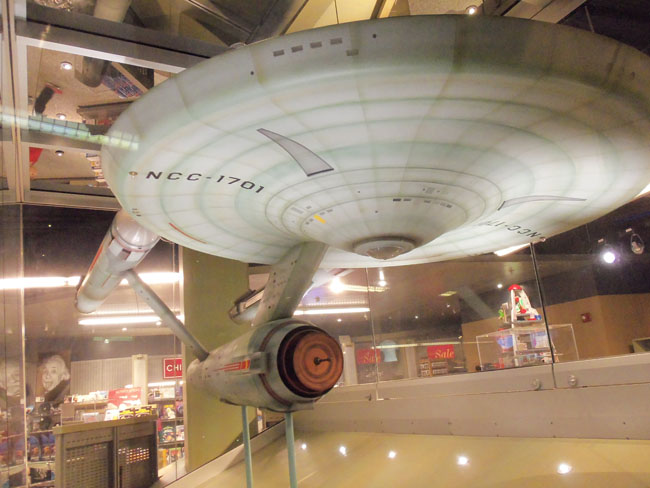 |
| As we left the A&S Museum, Karen found an appropriately-signed parking spot. We're all waiting... |
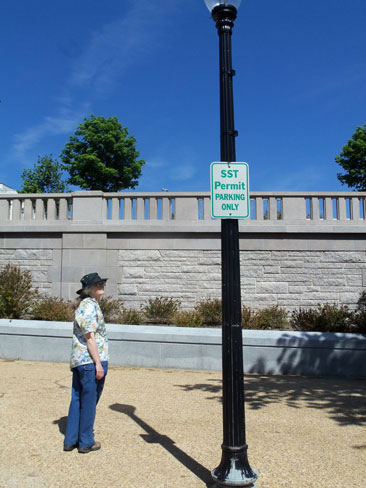 |
| After lunch at the American Indian museum's cafe, we continued on to the Freer Gallery of Asian Art. |
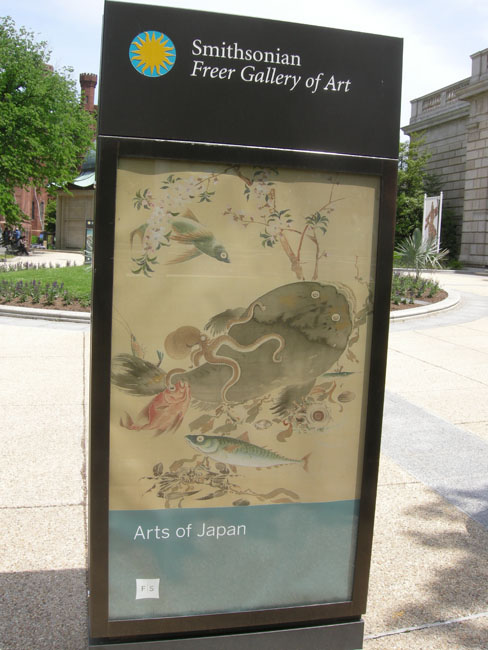 |
| In a few hours we spanned millenia of Chinese pottery... |
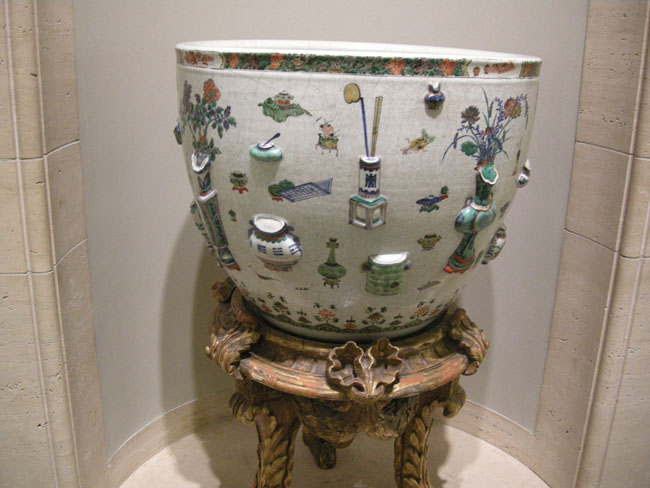 |
| ...especially with dragons entwined. (Physics moment: the mirrored case is forming a "corner reflector", so Karen's self-portrait is not right/left reversed as a plain flat mirror would produce) |
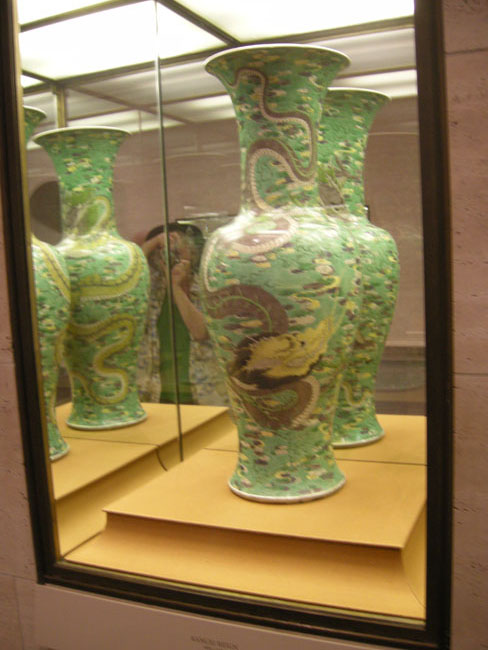 |
| Medallions (with dragon) |
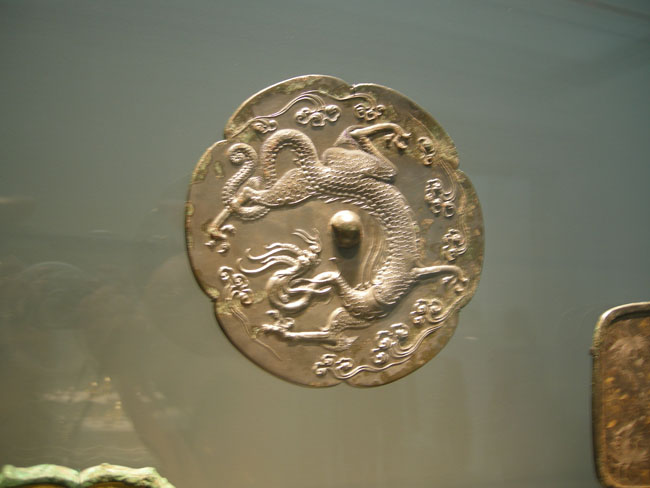 |
| Pottery with leaves and vines. |
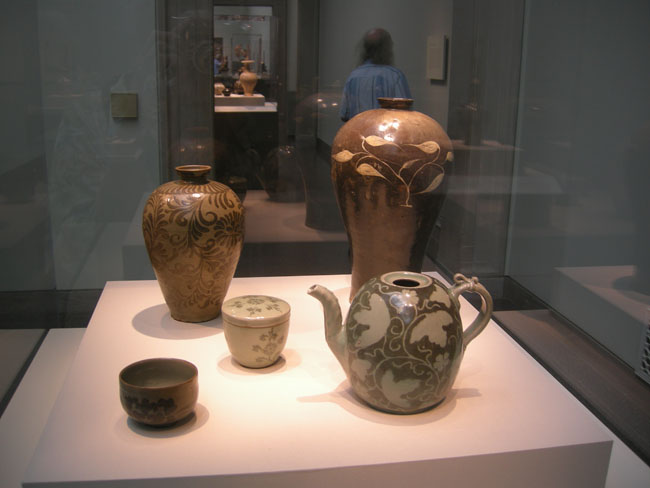 |
| Story scrolls and paintings |
 |
| The museum has a quiet courtyard. |
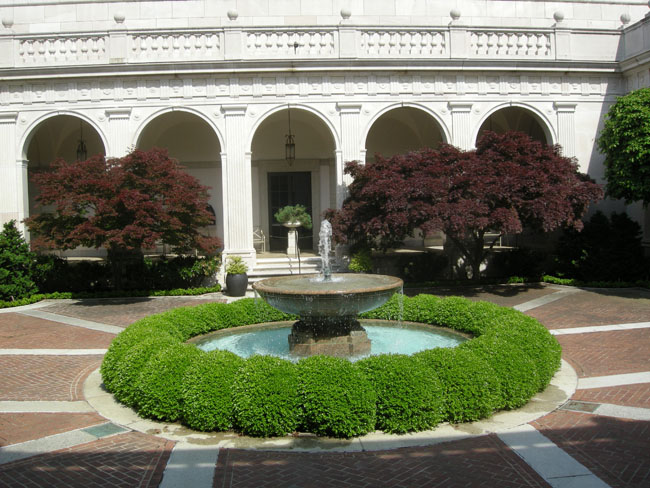 |
| Miniature Japanese guardian demons |
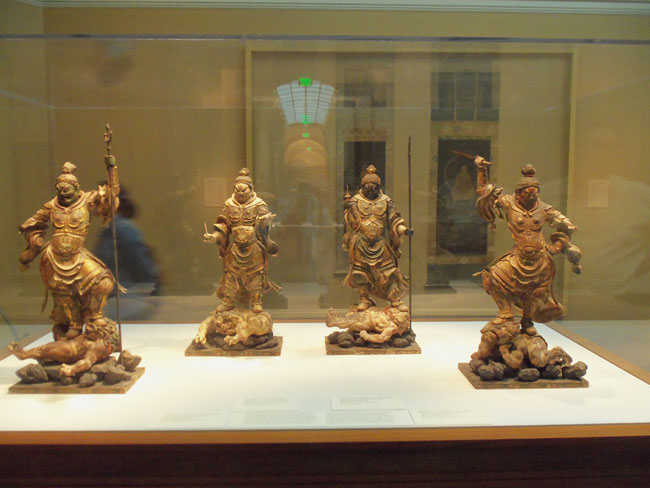 |
| Heroic 10-foot high guardian demons. |
 |
| Japanese painted scrolls |
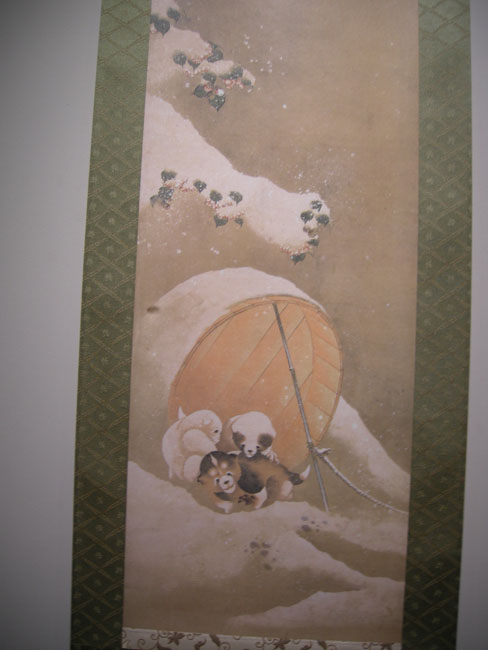 |
| Next door to the Freer is the companion Sackler Museum... joined three storys underground by a tunnel. A signature piece of this collection is this 60-foot high representation of the old Chinese fable "Monkeys Grasp for the Moon". Monkeys formed a chain to reach down from their tree to grasp the Moon's reflection in a pool. |
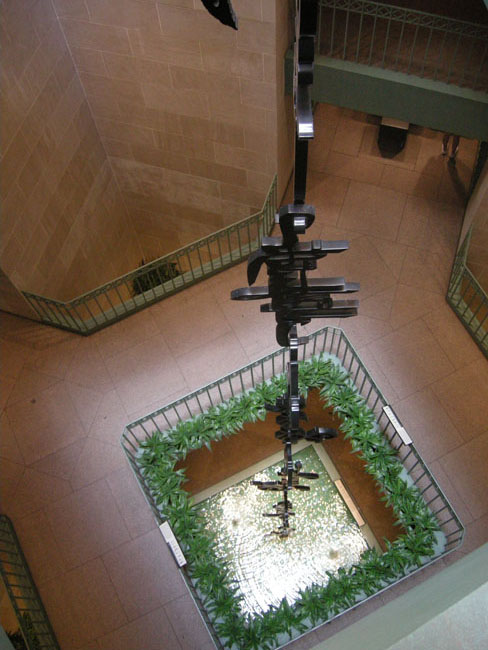 |
| In this artwork, each link of the chain is the word "monkey" in one of 27 languages (including Braille). |
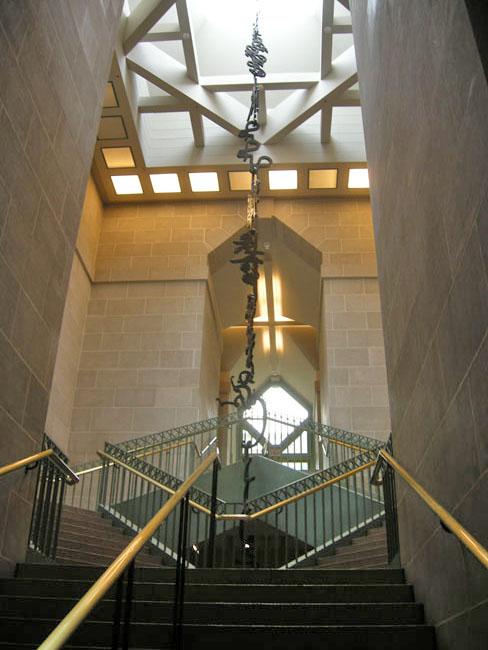 |
| An elder court official, with many dragons on his robes. |
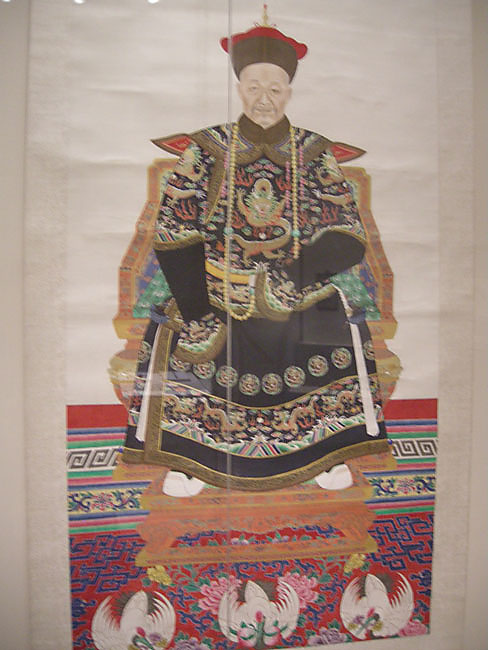 |
| The Smithsonian Castle itself. When Dick visted Washingon DC in (probably) 1963, he only remembers two buildings: the Castle and the Arts and Industry buildings. During this visit the Arts and Industry building was closed for renovation. |
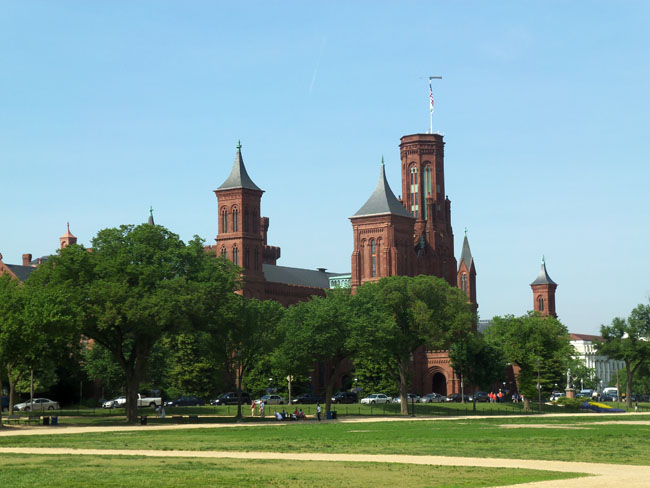 |
| There are now 19 museums (17 in Washington DC proper), and the Castle has only a few small exhibits. |
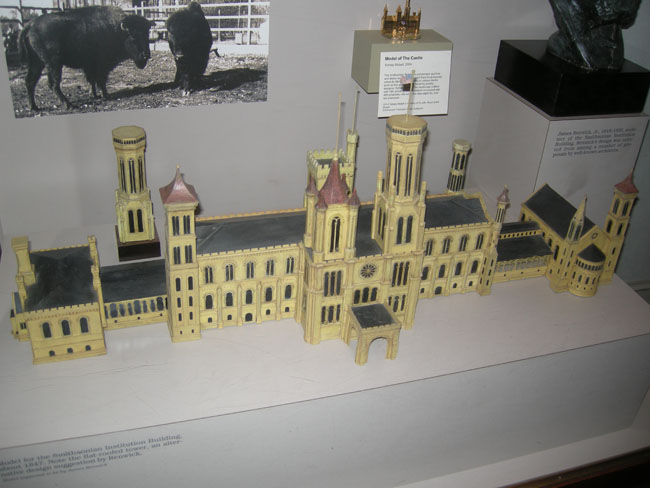 |
| The Castle's central gallery is still impressive architecture |
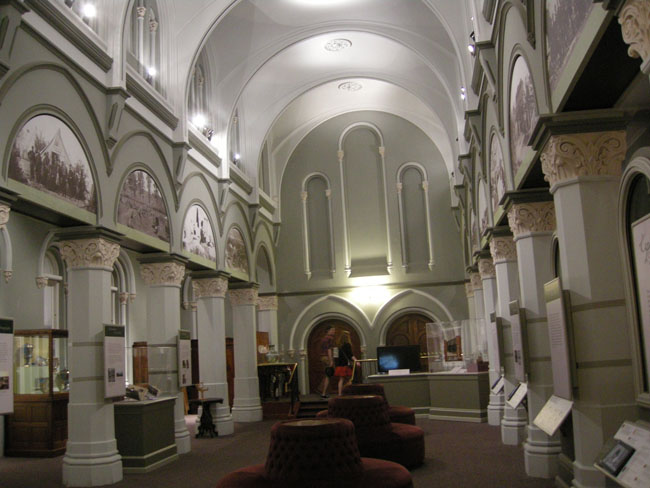 |
| ...and the Castle is still James Smithson's final resting place. |
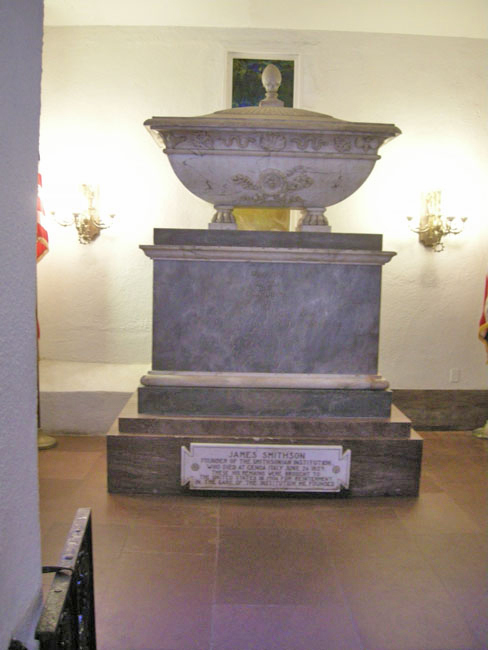 |
| The next day heralded the European Union's Embassy Open House Tour, which we've already covered in the first week's photos. The one addition was that the tour brought us to the Naval Observatory's grounds. Since it has become the Vice President's residence, they're no longer accessible for casual touring. |
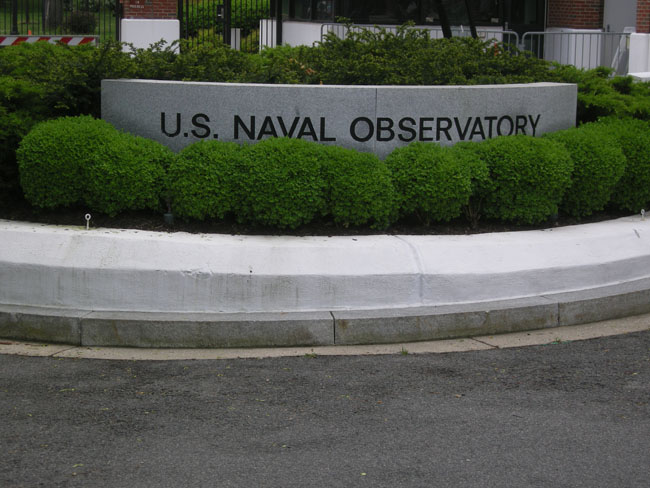 |
| But they are still the folks entrusted with maintaining the official US Time standard. |
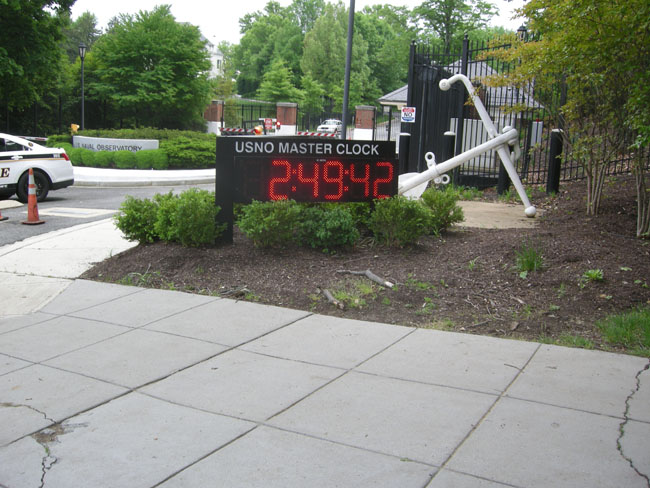 |
| On Sunday we were tying up some loose ends, and came across the Tesla Electric Car dealership.. We have a friend with an Electric Leaf, so we thought we'd include this shot of a far more expensive buggy getting its fill-up from a floor outlet. |
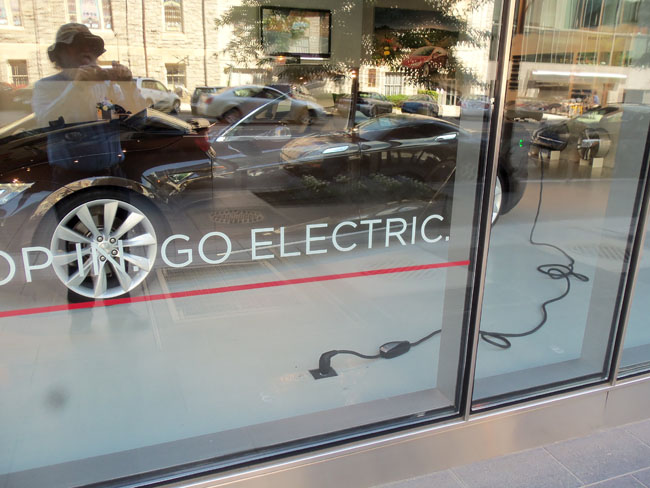 |
| On the day we'd visited the Freer Asian Art museum, we'd been chased out of the neighboring Sackler due to their closing hour. So we intend to go there but made the slight navigational mistake of "taking a short cut" through the Natural History museum. |
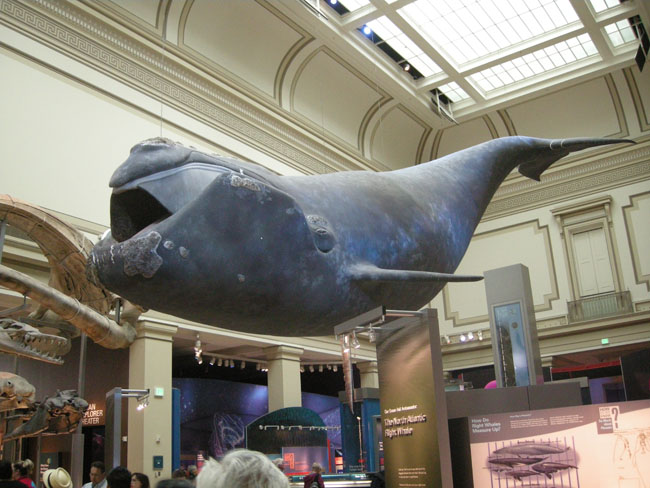 |
| .. which took four hours... |
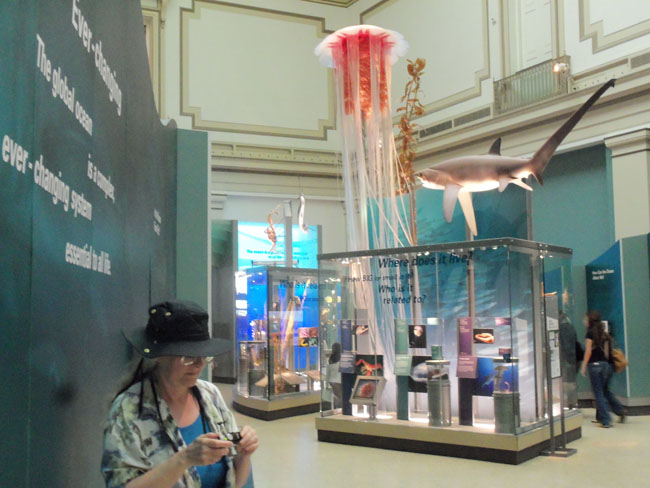 |
| They had a large globe as the "screen" for an auditorium playing videos of air and ocean currents, continental drift and global warming. |
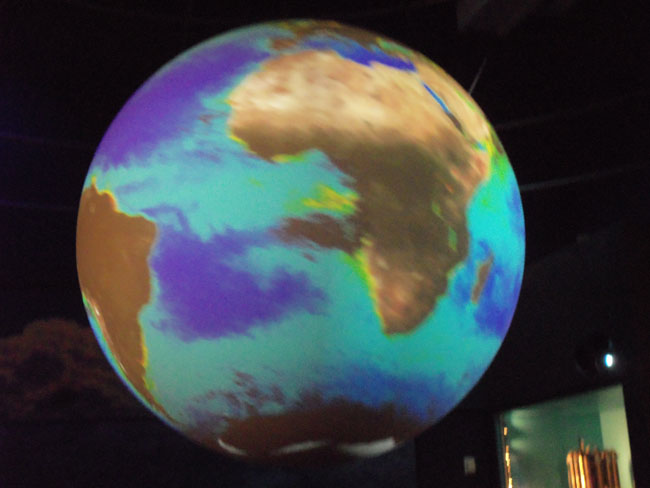 |
| In a far quieter museum than our first visit, we were able to enjoy the exhibits we'd missed or simply rushed through. |
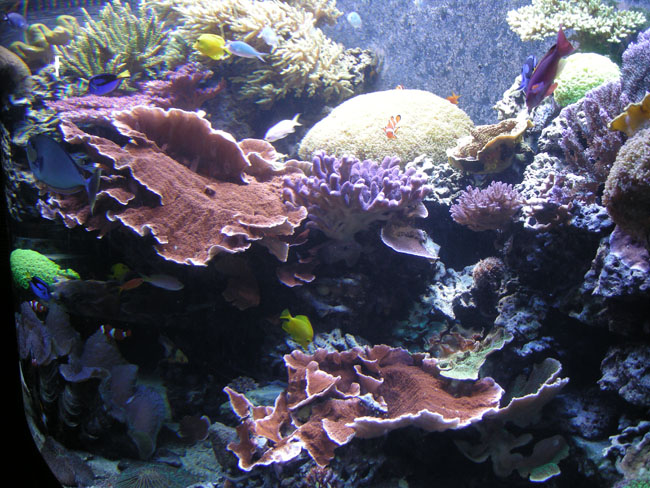 |
| I can't say that a Coelacanth is eveybody's kettle of fish, but it always sparks our interest. |
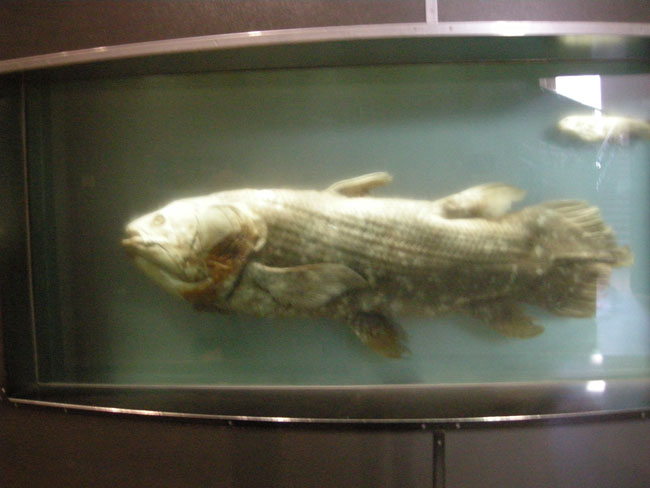 |
| Karen is a fan of taxidermy dioramas... the Smithsonian has mostly taken them apart to free up space and create a new way of displaying the animals. |
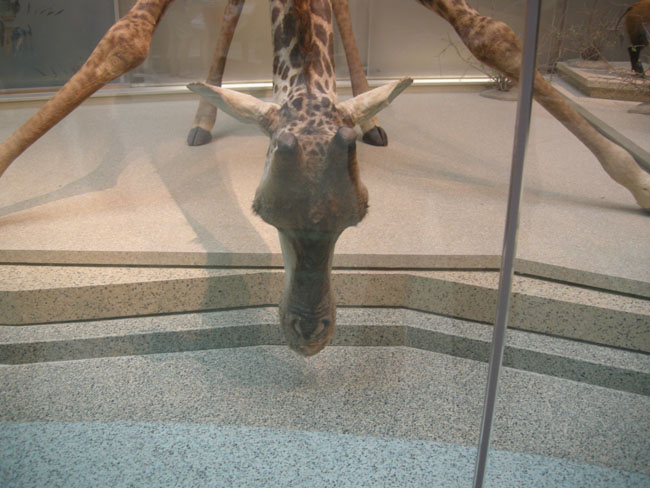 |
| Instead of each in its own case, the animals are now gathered in a single large room... lots of light and air make the classic poses "come alive", with the ability for the visitors to see them from many different angles instead of just the restricted "window view" of the past. |
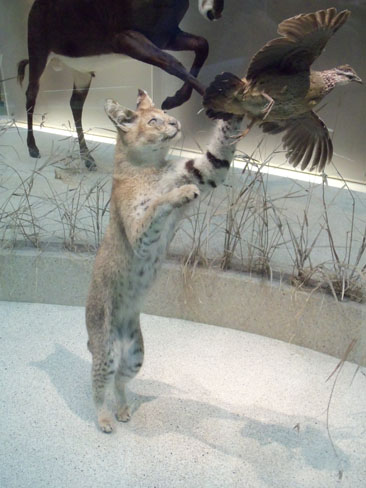 |
| This is lookup up at a tiger that's leaping from a 2nd story ledge. |
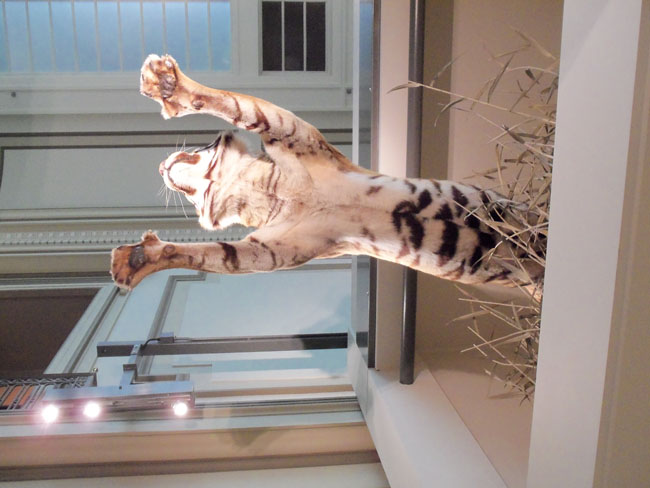 |
| The displays are well-lit and easy to appreciate and enjoy. |
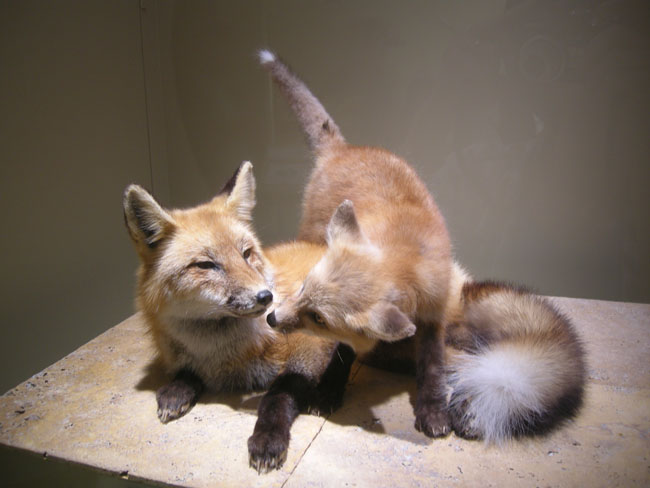 |
| We'll leave the Natural History Museum by bidding adieu to its signature African Bush Elephant. |
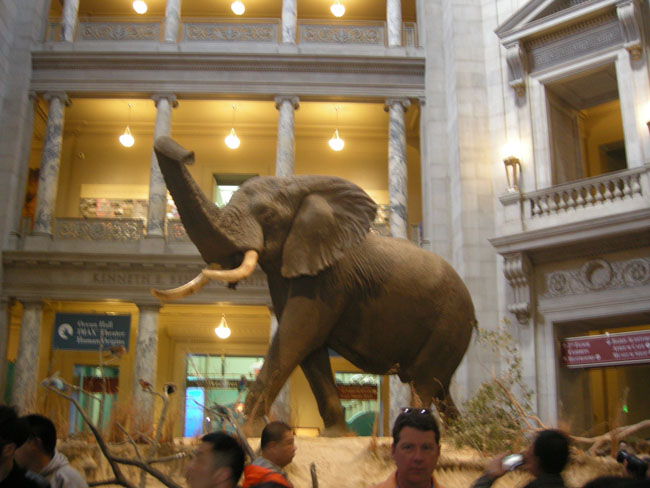 |
| From the mighty to the small... this white squirrel (we saw all four colors on this trip: white, red, brown and gray) had gathered his own crowd, and was not at all shy about running up to people's feet to try and cadge a handout. |
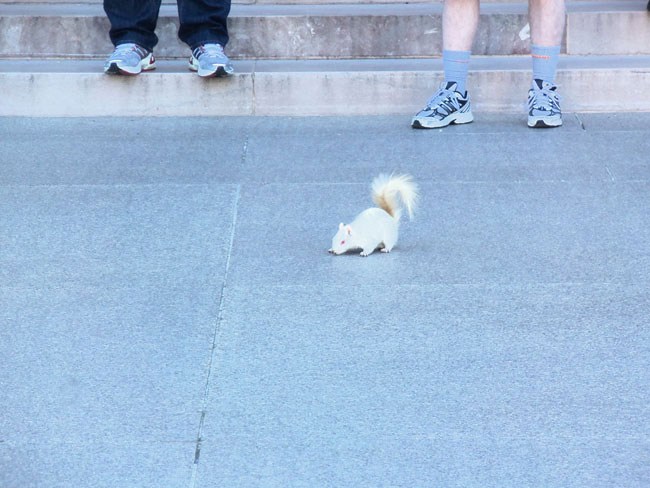 |
| The Natural History Museum detour consumed much of the day, so we went to the adjacent National Gallery of Art to take a slow meander through the galleries we'd missed (we'd freqeuently used it as a "hallway" to traverse that length of the Mall). Fine porcelain... |
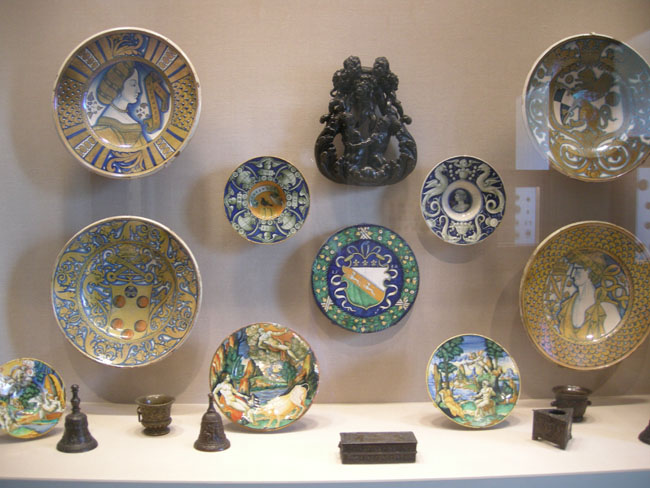 |
| ...exquisite inlays of wood... |
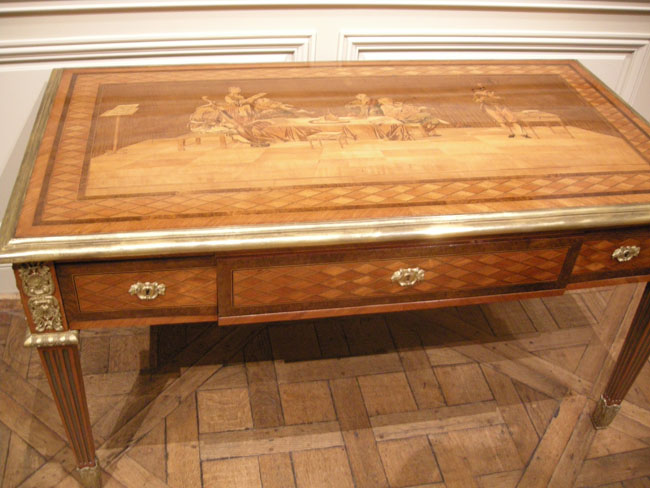 |
| ...and stone. |
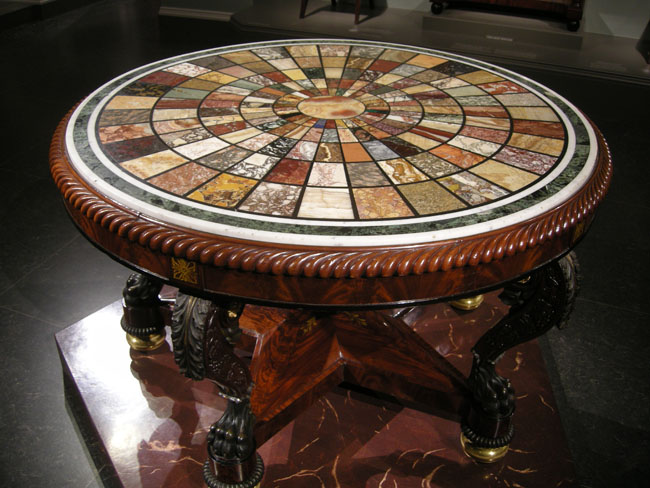 |
| Karen's not a big fan of "2D art", but for Thomas Moran she's willing to pause. |
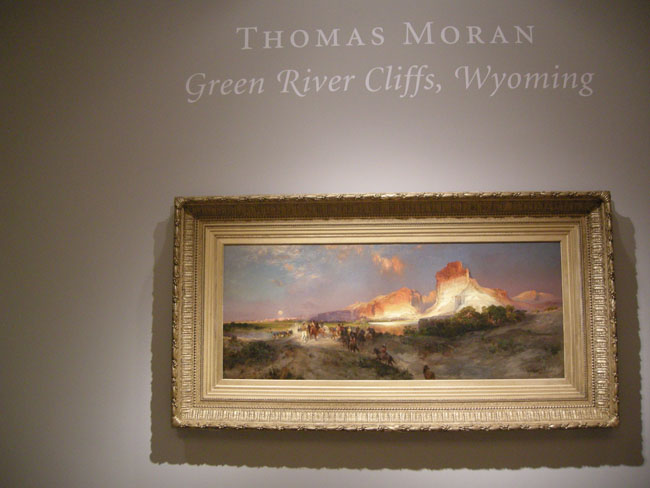 |
| The Gallery's central hall does give a sense a grandeur. |
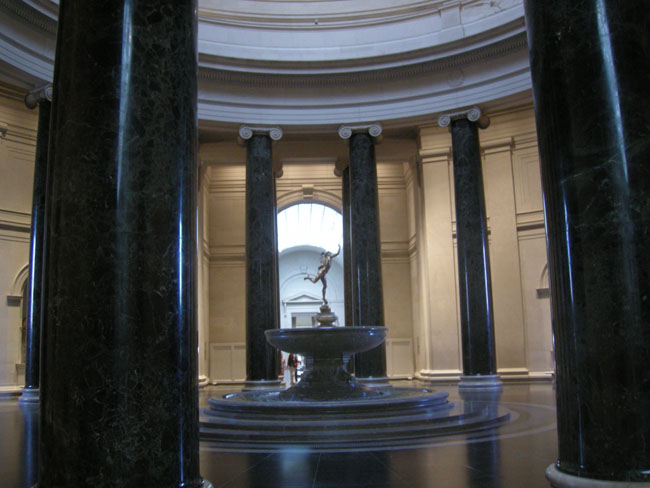 |
| And, lest we forget lunch, one end of the underground tunnel which connects to the East building's Modern Art exhibits has a very effective brick waterfall as one wall of the cafeteria. |
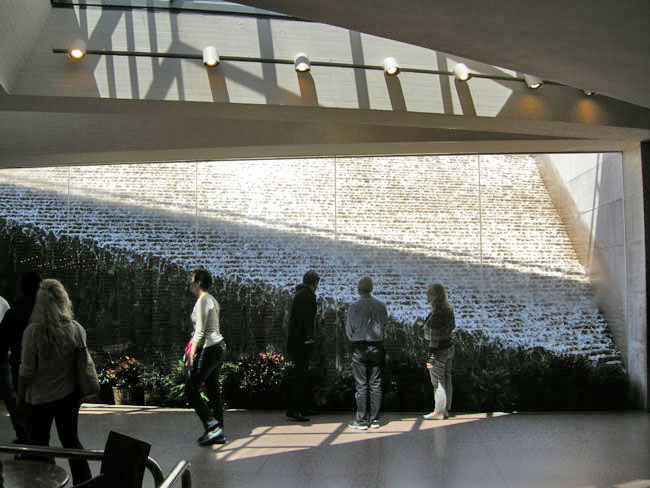 |
| At the other end of the tunnel is "the modern stuff". |
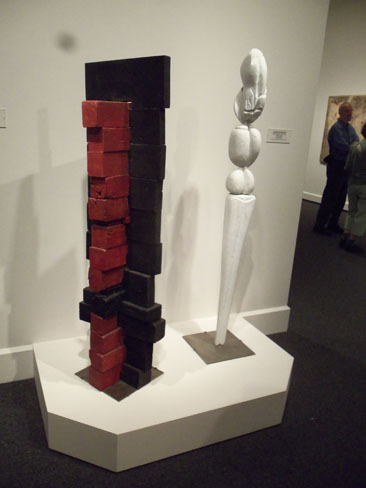 |
| How do you know when to stop if you're unpacking a Christo from shipment? |
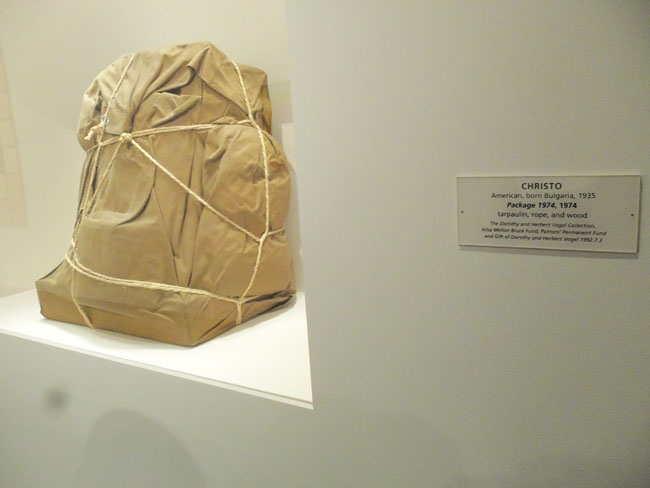 |
| There was a multi-floor silo of Calder's works. |
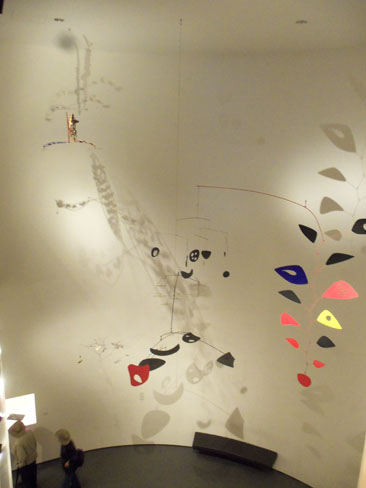 |
| Including (almost) static pieces on the ground... but their heads and tails would move in the breeze of passerbys. |
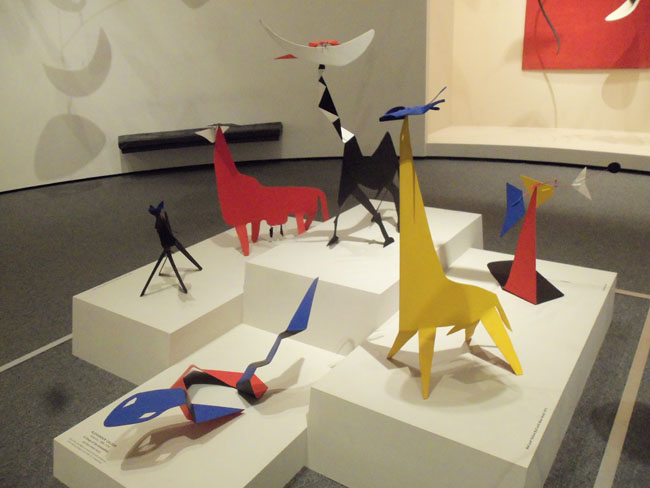 |
| As we neared the end of our stay, the scaffolding on the Washington Monument completed its climb. |
 |
| The peak was ready to lift the aluminum tip from the monument. |
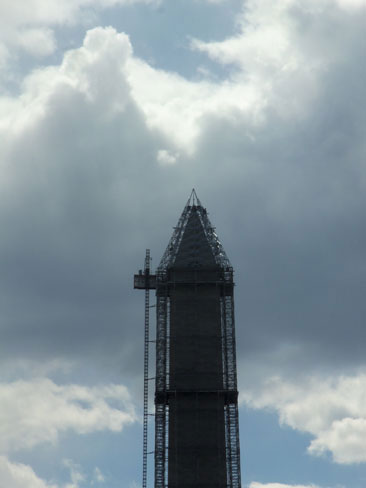 |
| On our penultimate day, we went to the Renwick Gallery of American Art "contemporary crafts and decorative arts". It's located just across the street north of the White House (hence the bollards you see filling the street), directly across from the Eisenhower Executive Building. |
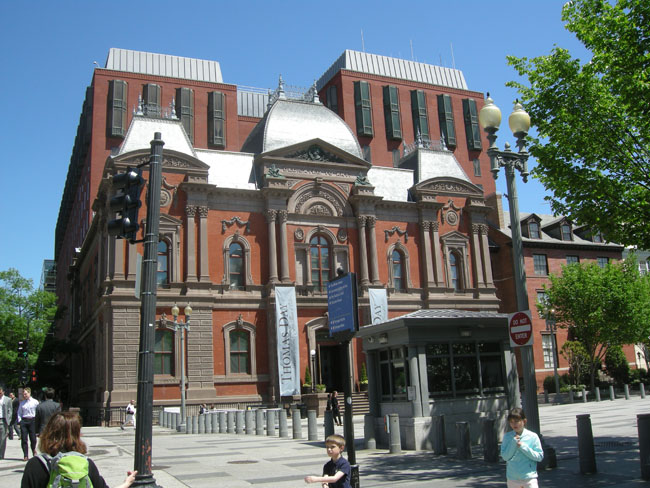 |
| This is a delightful museum filled with whimsical objects, such as this glass spinning wheel. |
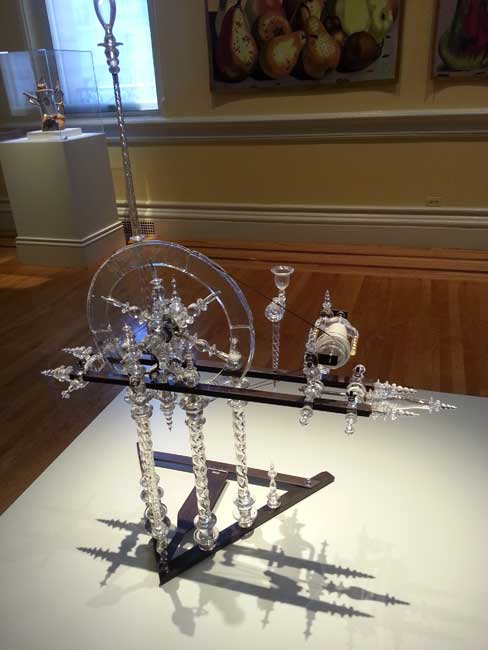 |
A "flung hose" (in steel) as a gate.
Note the fish tail on the left wall. |
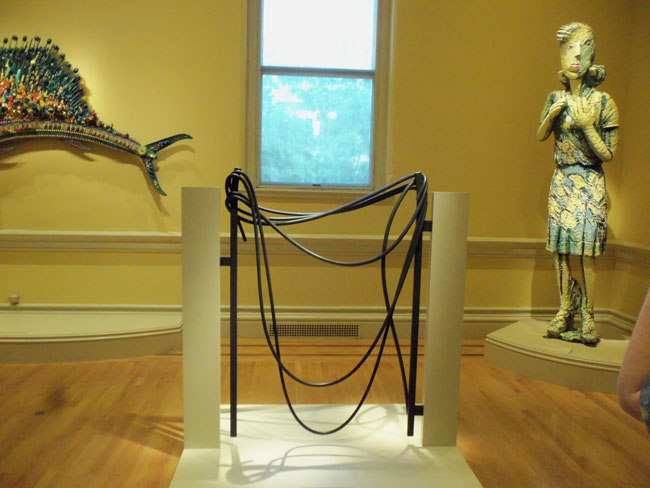 |
| That's Larry Fuente's Game Fish, festooned with toys and game pieces. |
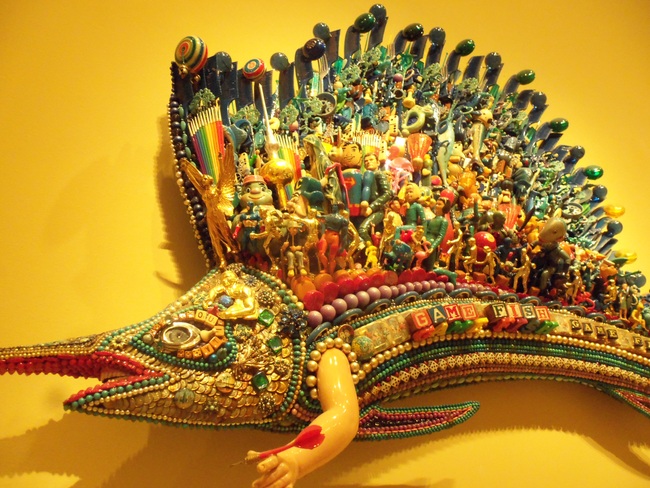 |
| Here's Dick, rapt with Wendall Castle's (apparently wrapped) Ghost Clock... which is actually all wood (no cloth) ... carved entirely from laminated mahogany. |
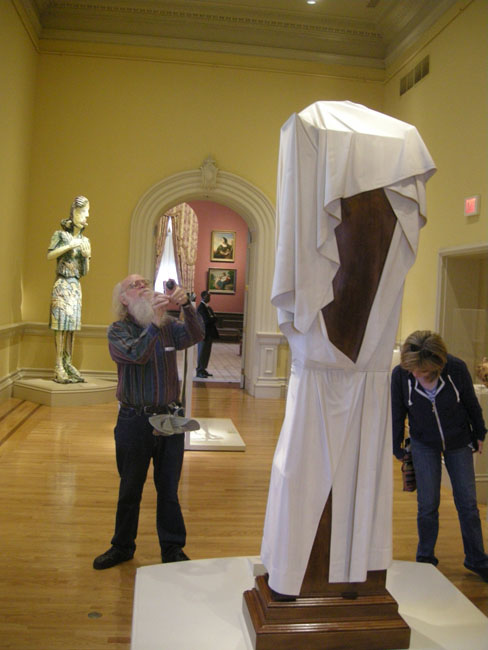 |
| Karen inspecting the detailling on John Cederquist's Ghost Boy |
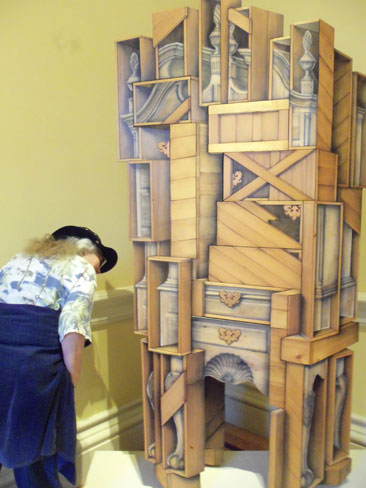 |
| And the fabulous intricacy of Kim Schmahmann's Bureau of Bureaucracy |
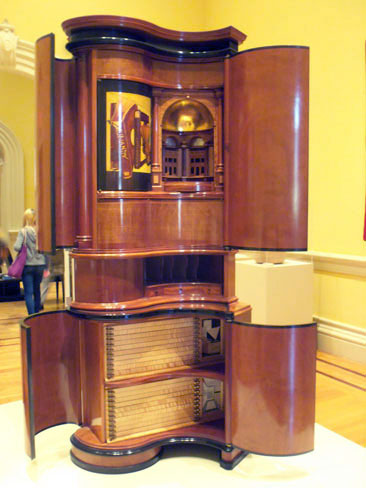 |
| The Renwick also has a grand gallery with the walls filled with oils and the windows draped appropriately/ |
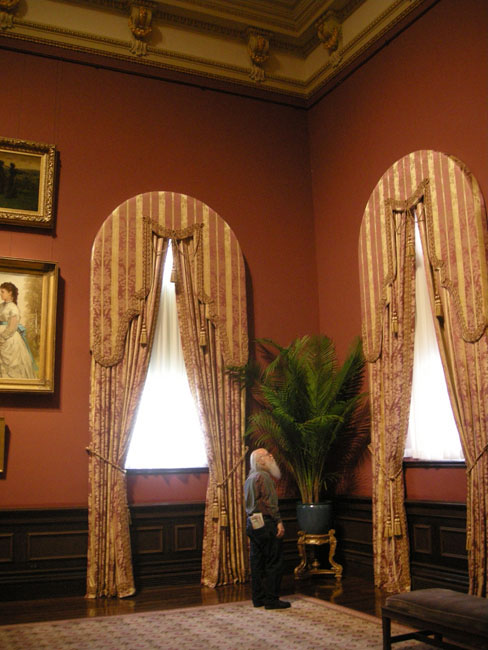 |
| The staircase leading to the gallery. |
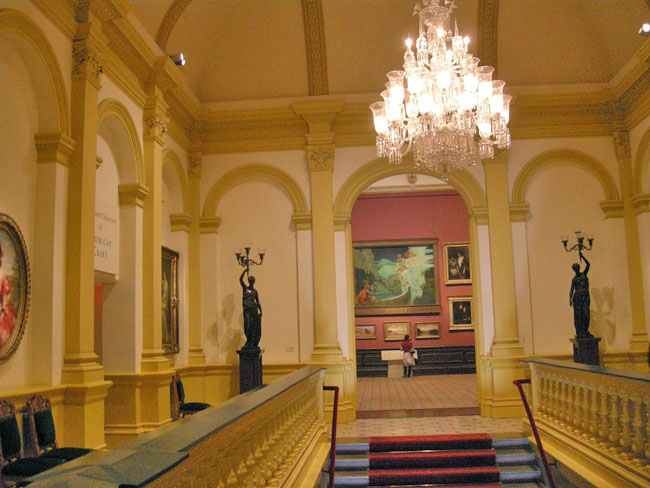 |
| ... centering on Frederick Waugh's Knight of the Holy Grail |
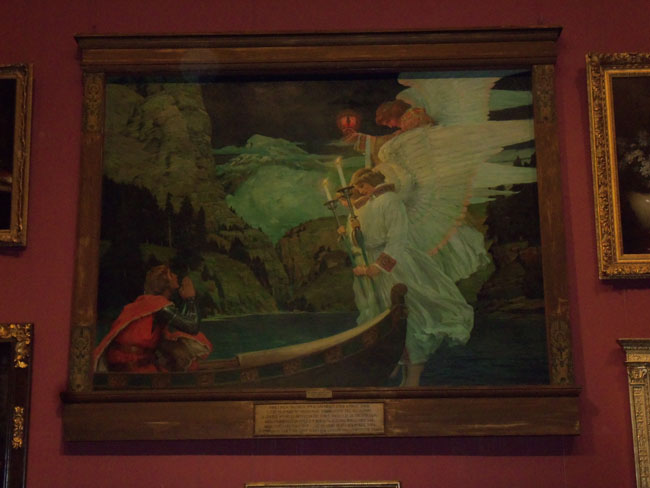 |
| Departing the Renwick, we wandered the Mall a bit, and were treated to a very strange cloud pattern. Fishnet, chicken wire or benzene rings? |
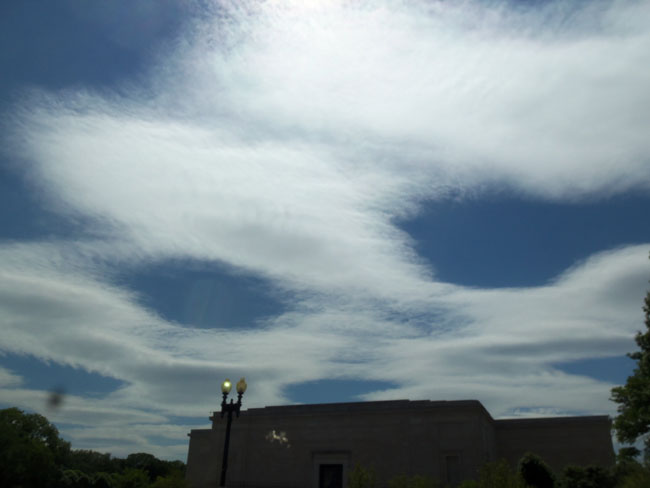 |
| Our previous visit to the Zoo had been cut short due to the lateness of our arrival. After the magic of the Amazonian exhibit, we wanted to make sure we hadn't missed something equally wonderful in the other interior exhibit buildings. |
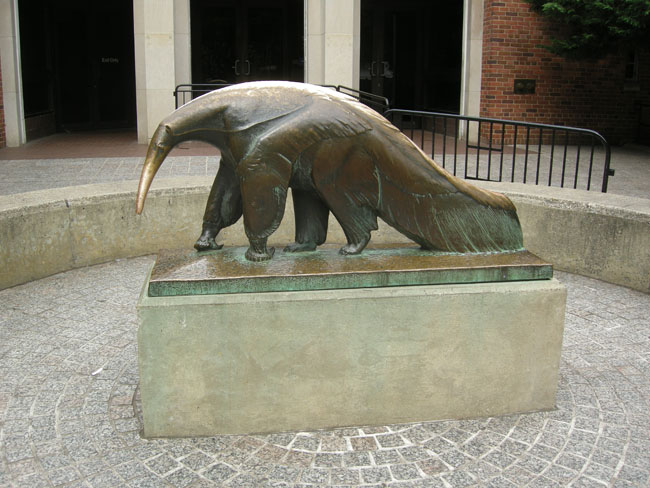 |
| Our first stop was the "Small Mammals" building. Yes, they were small and (almost) universally cute. |
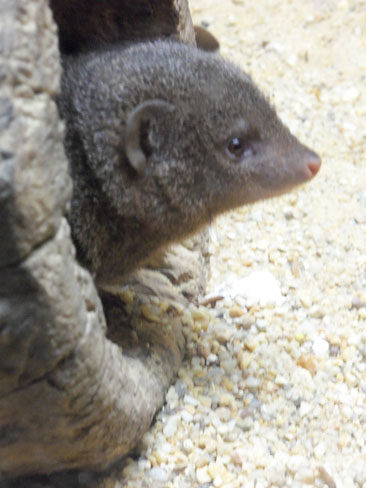 |
| One mongoose from their mob of mongeese. |
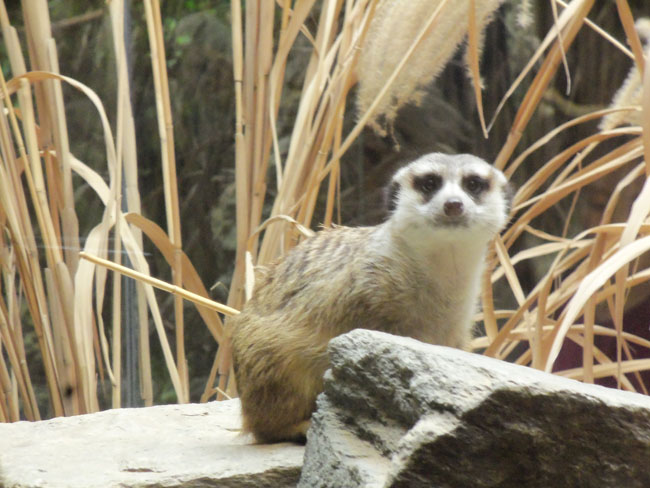 |
| And the other end of "cute": naked mole rats. |
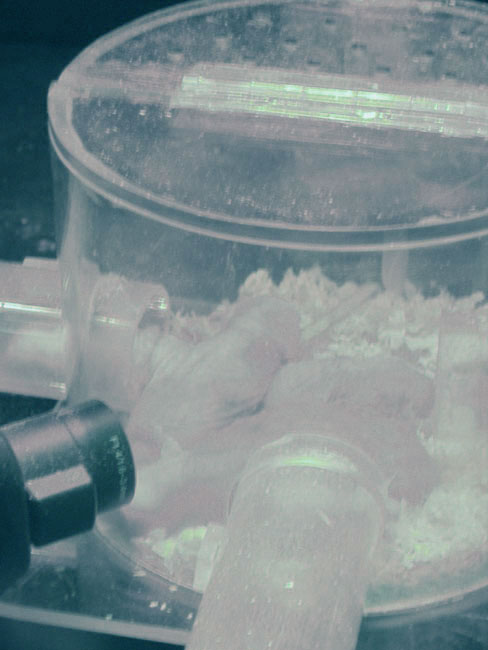 |
Running above some of the zoo was this... cable car? Gondola?
No... it was a climbing line for the Zoo's Orangutan. We're sorry we missed them. |
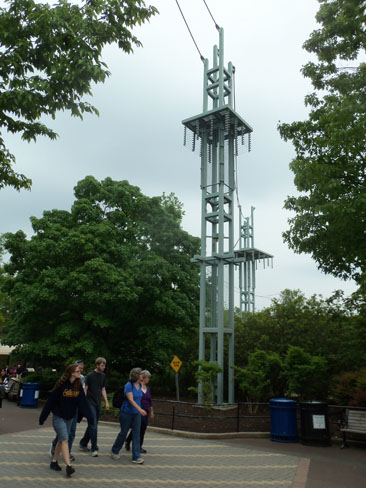 |
| After fuzzy small mammals, we sought out the Invertebate House with its exterior (and interior) Octopi. |
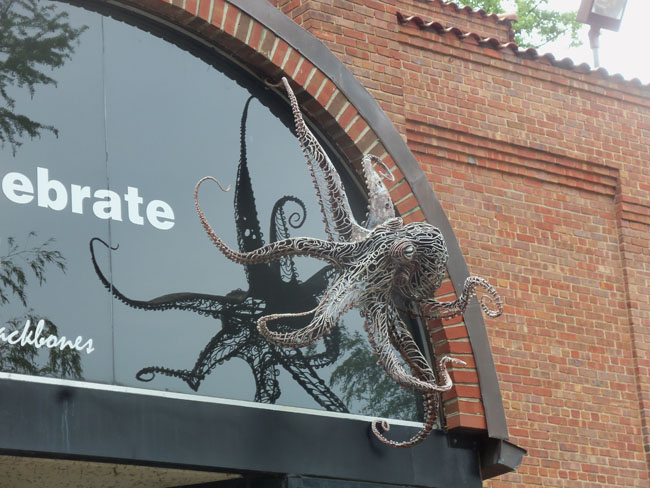 |
| ..and there were even some fuzzy ones. |
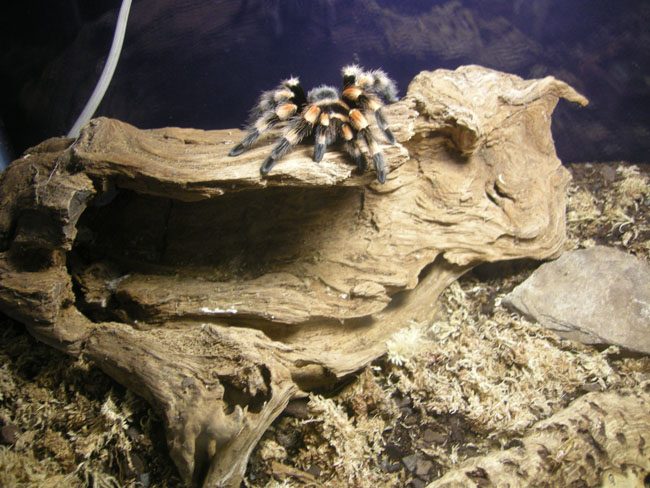 |
| Jellyfish exhibits will stop us for minutes to hours. |
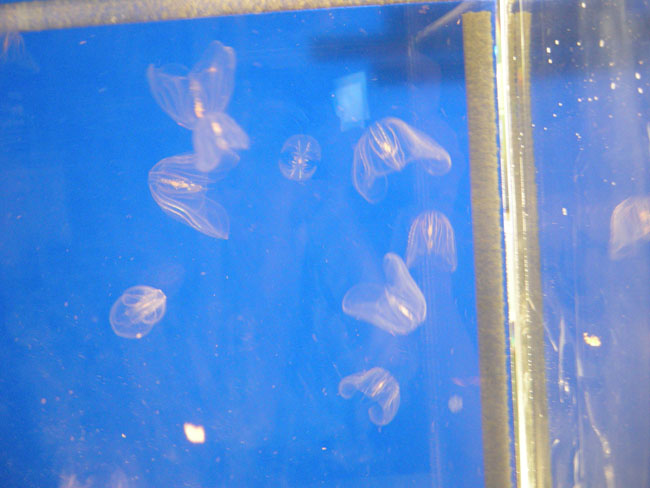 |
From bugs and jellies, it's off to the Reptile House, including snakes that crawl on their bellies.
(please forgive the punch-drunk author...) |
 |
| The building reflects proper whimsey (a bit lacking in the newer structures) |
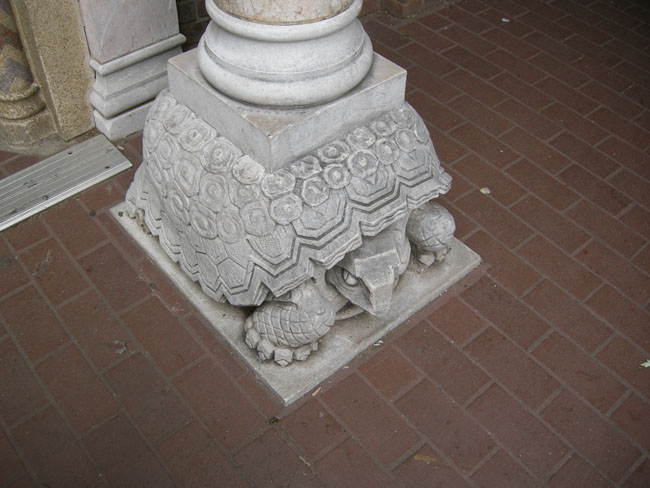 |
| A proper Iguana |
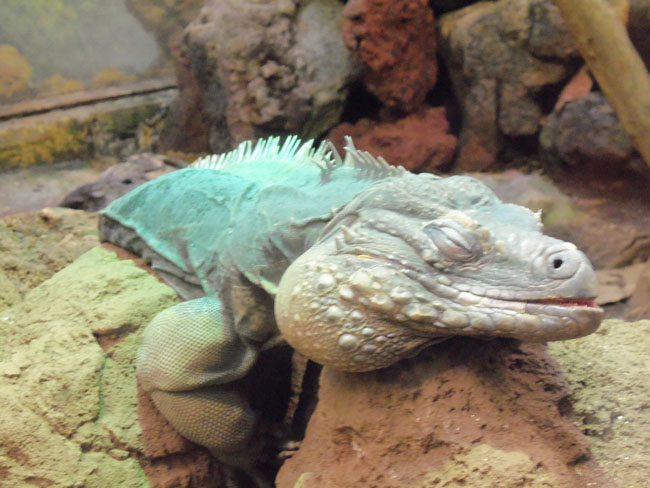 |
| Yes, birds are descended from reptiles, but we've really returned to the Amazonia exhibit again. It was that smidge earlier in the day that the birds were more "out" and active. |
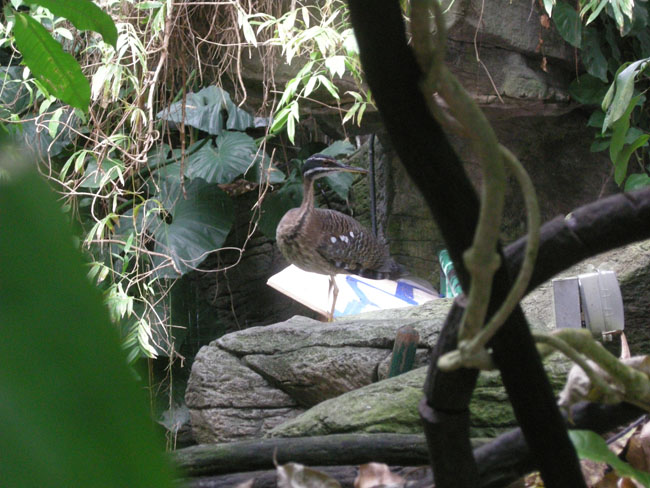 |
| ...and chirping. |
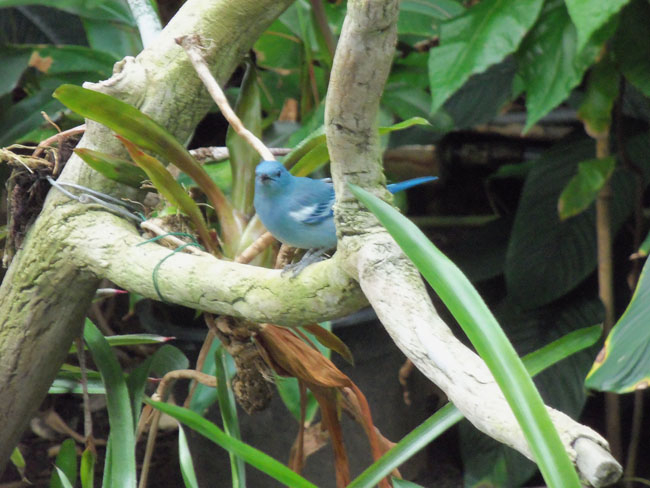 |
| The exit of Amazonia featured this large insect... |
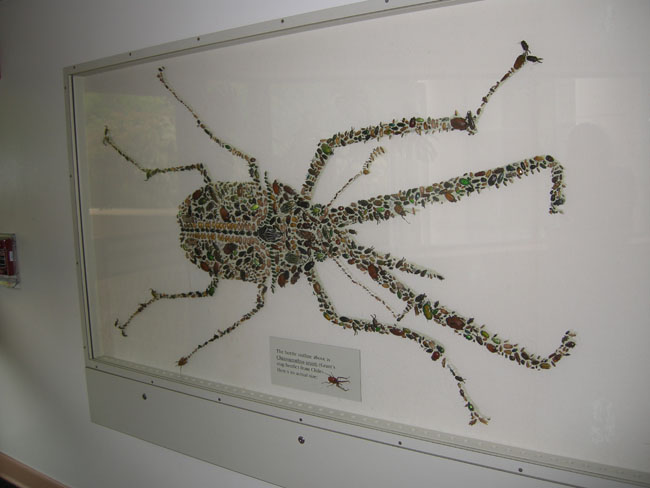 |
| ...made of insects. |
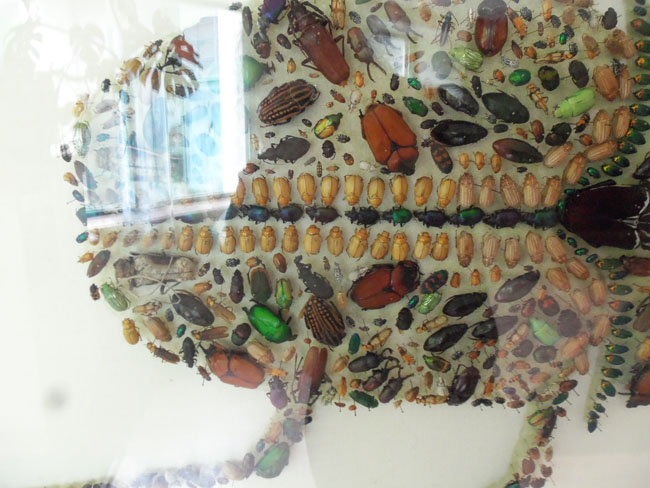 |
| Since we weren't quite so late, the Amazonia exhibit also provided access to this science activity center, with another (smaller than the Smithsonian's) globe serving as projection "screen" for active demonstrations. |
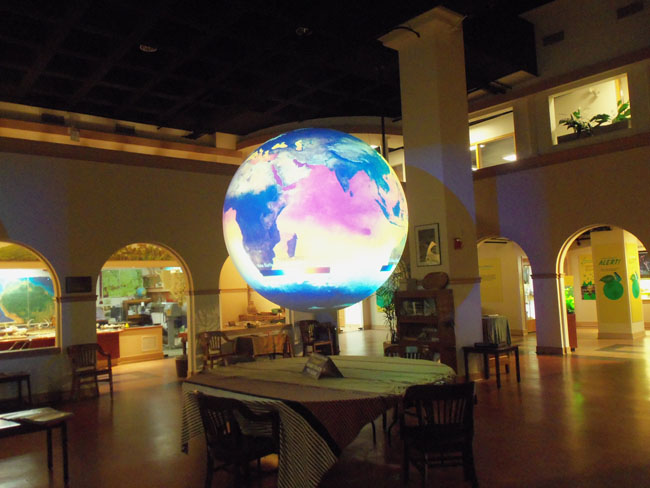 |
| But now it is our last day... we packed, cleaned up the apartment, and took a few quick walks in the nearby renovating neighborhood before we hopped on to the subway.... |
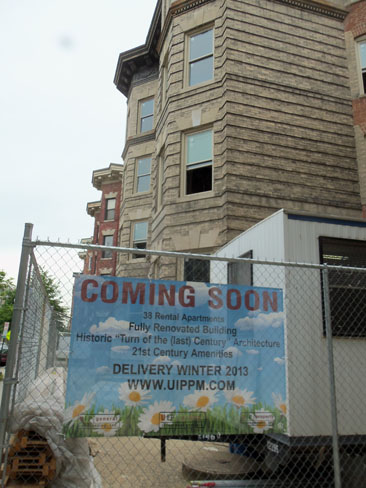 |
| ...to take us directly to the airport, where we were treated to another long vaulted ceiling in the gate area. |
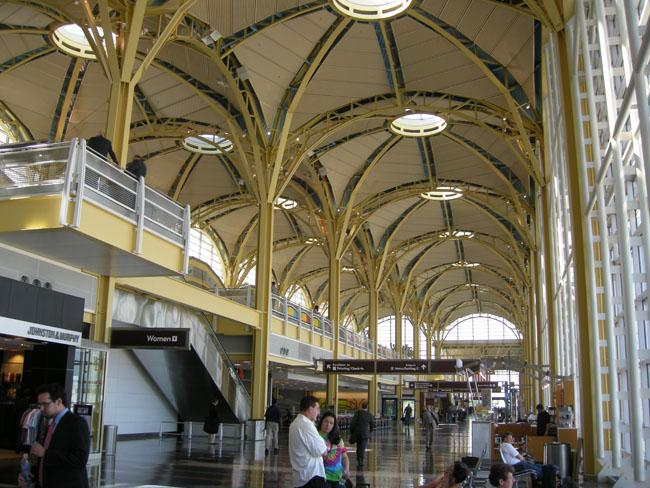 |
| And we taxied out on a warm hazy day, with a sheathed-in-metal icon standing nearby. |
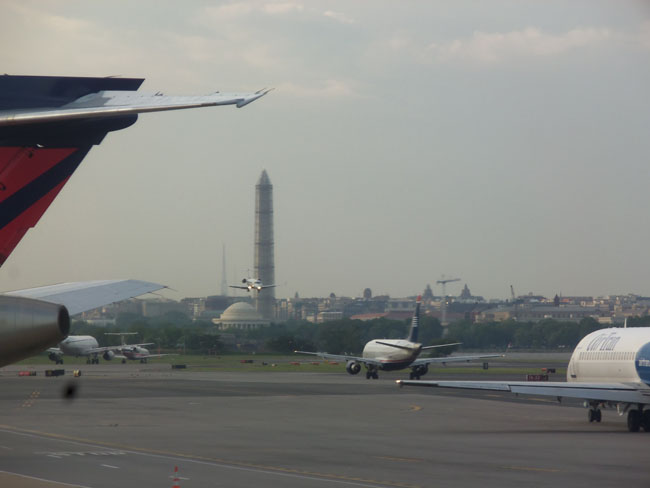 |







































































































































